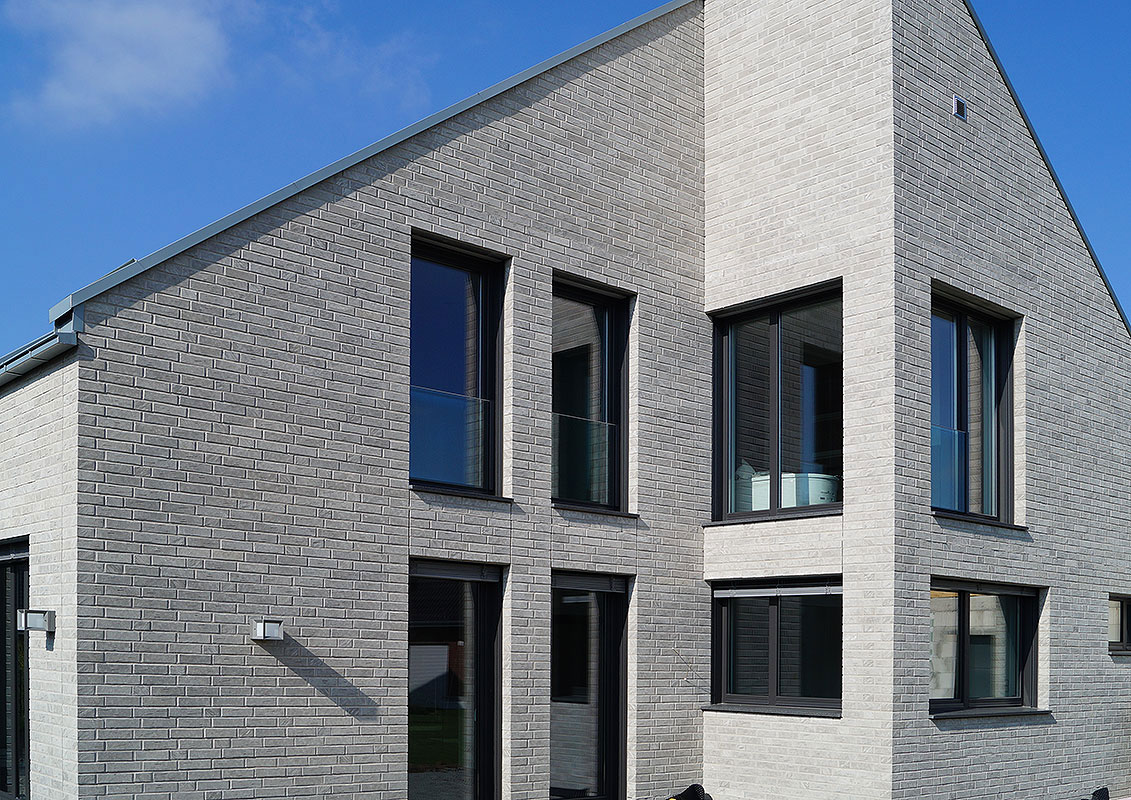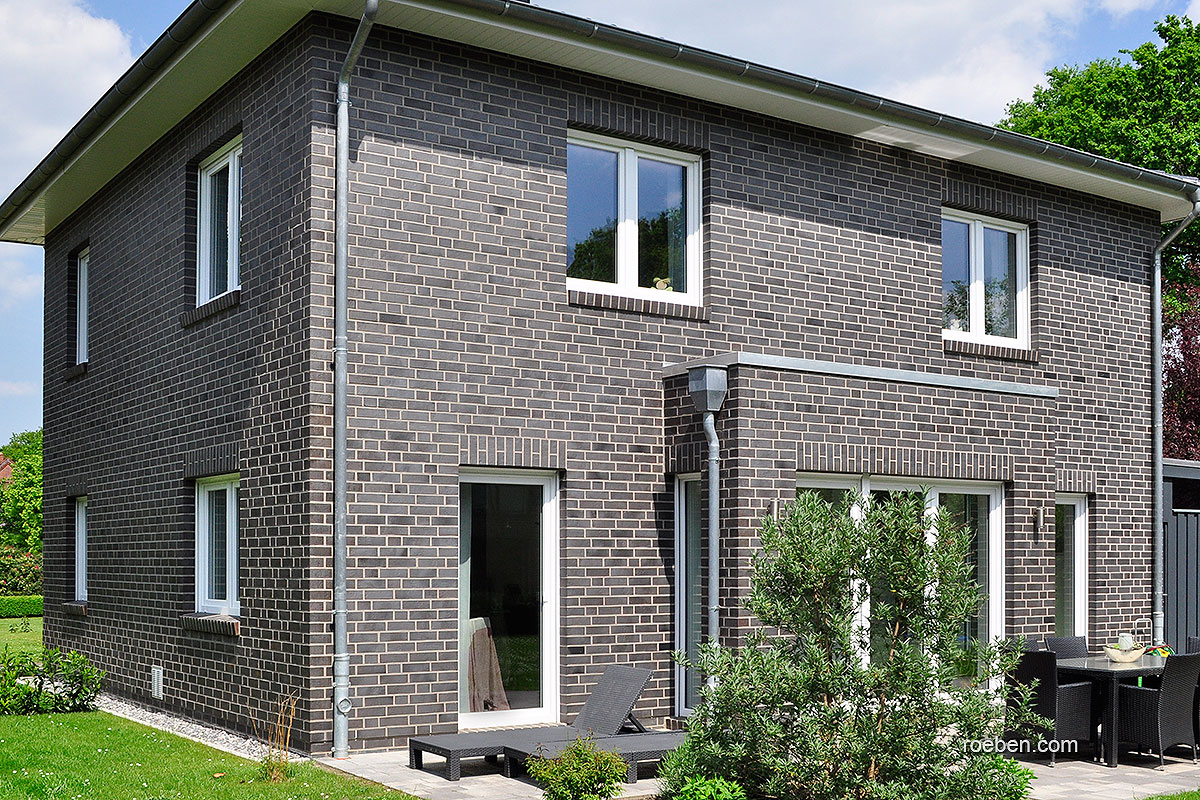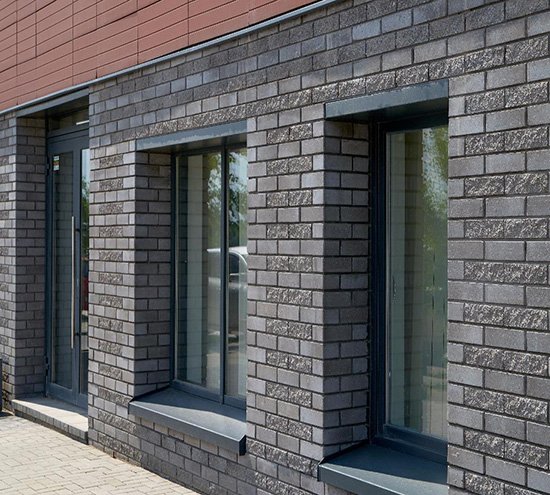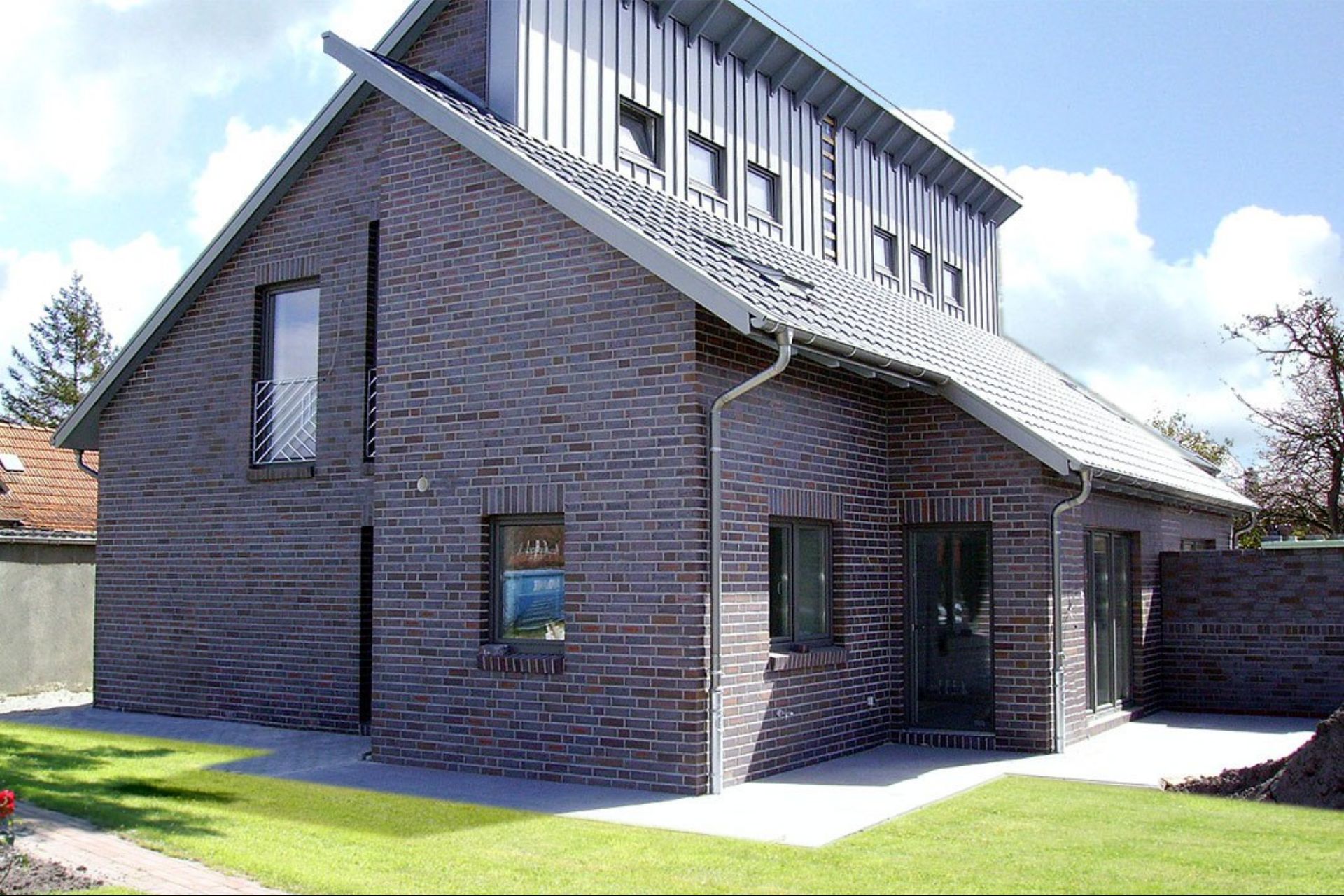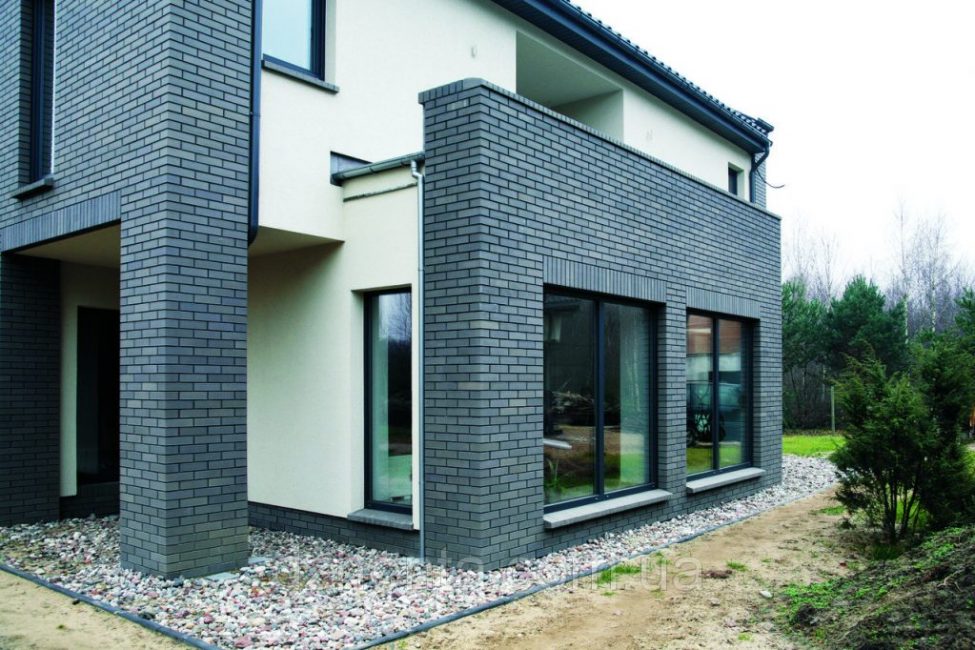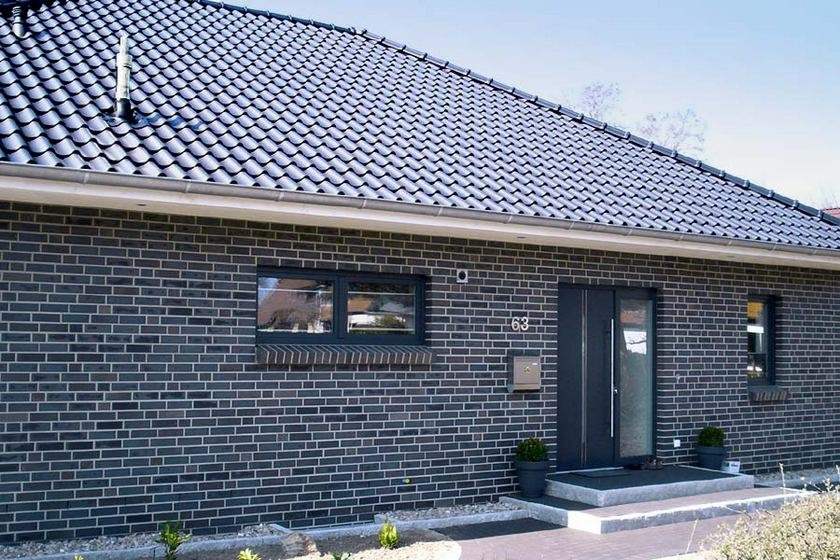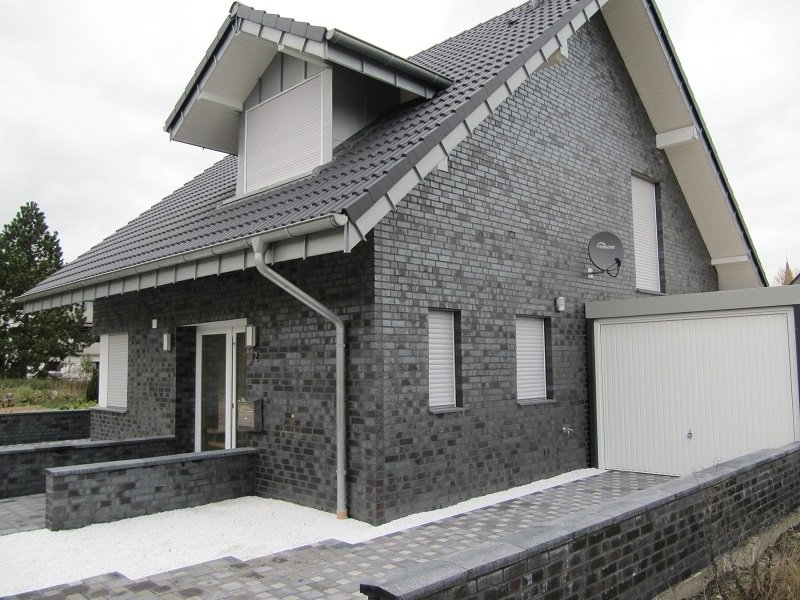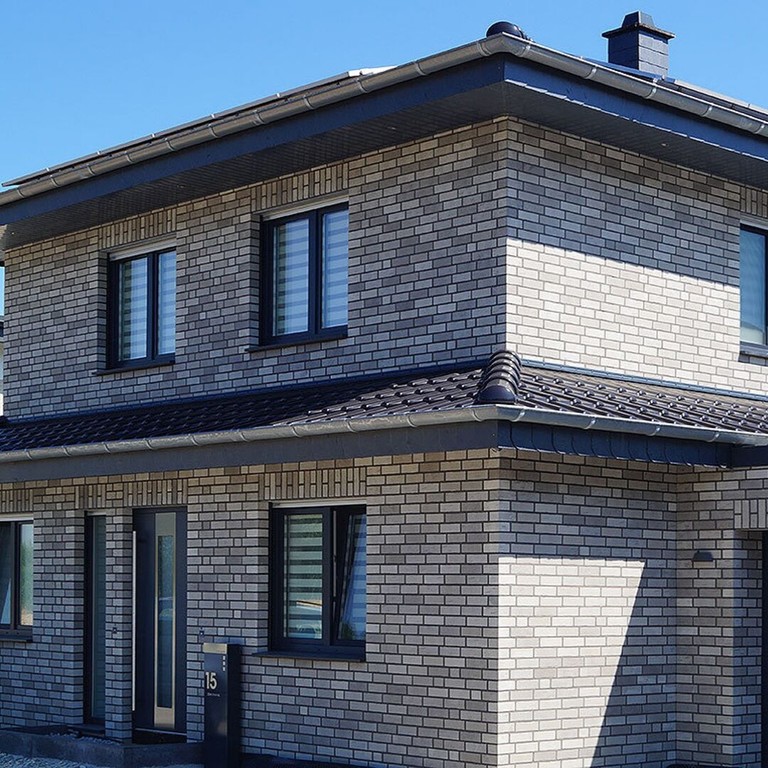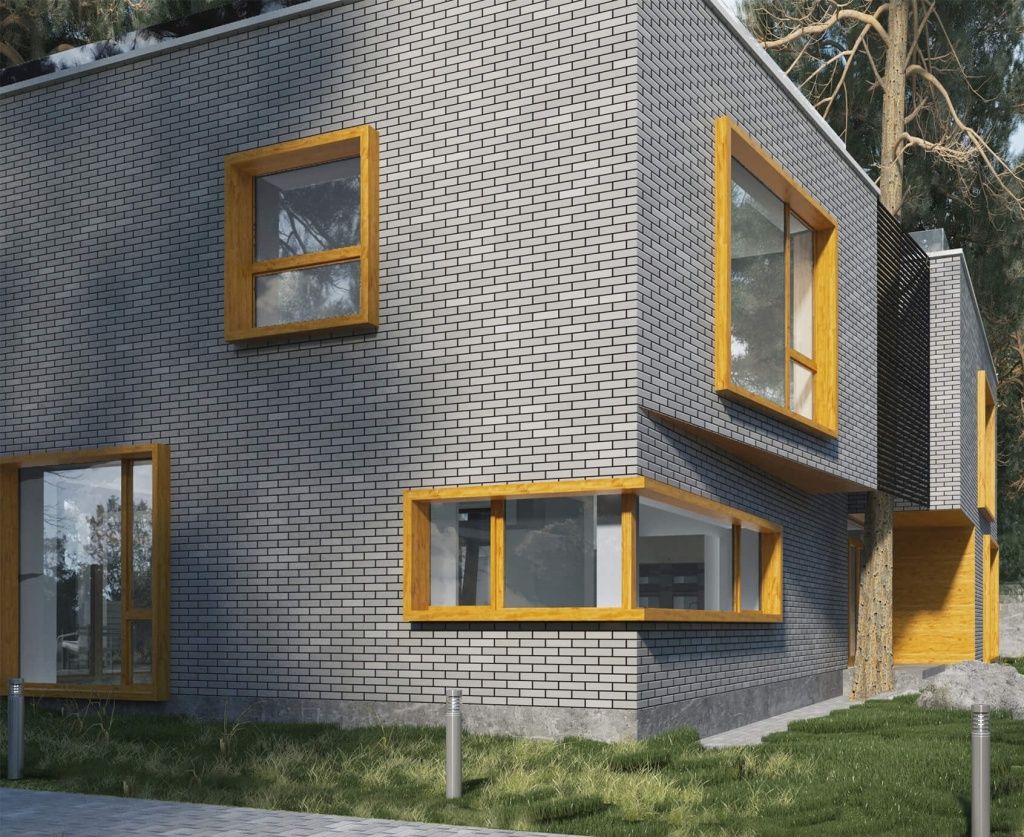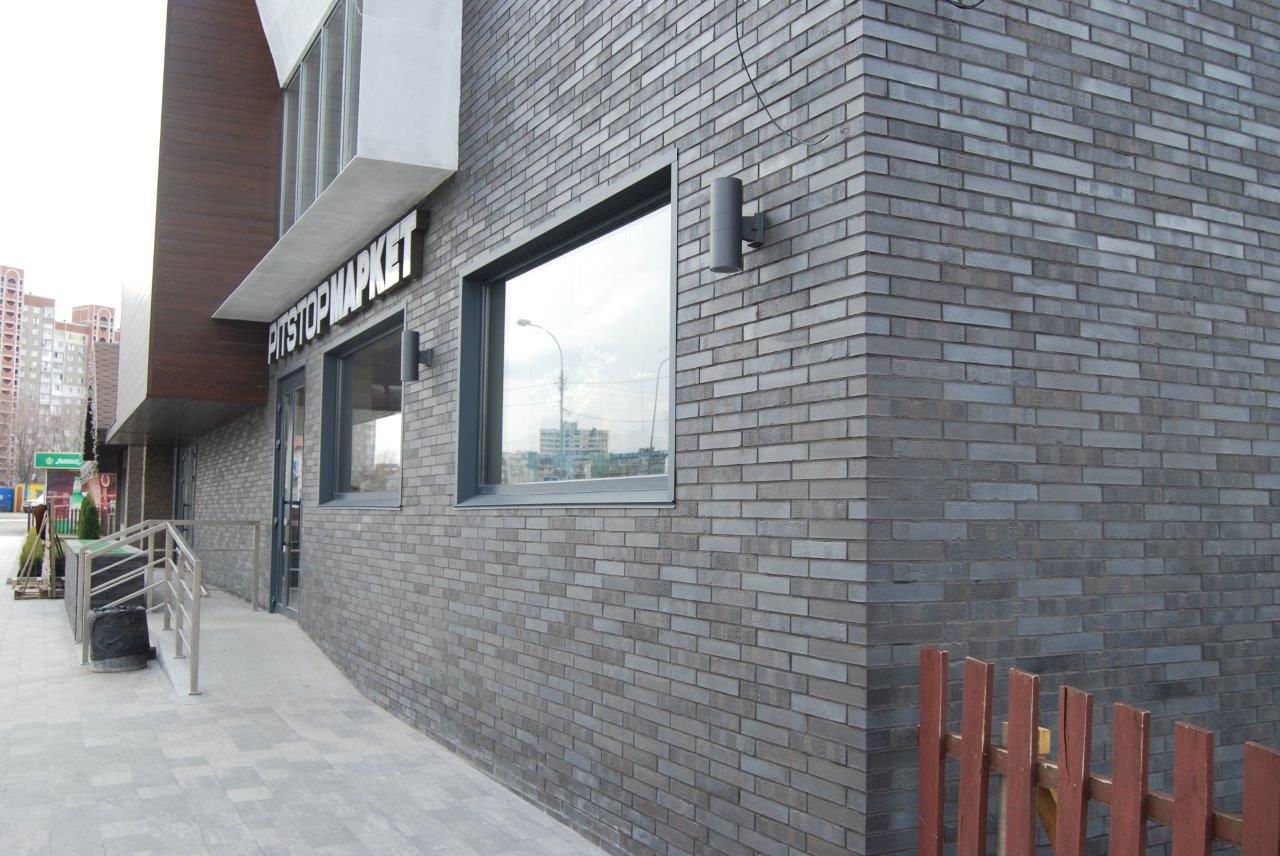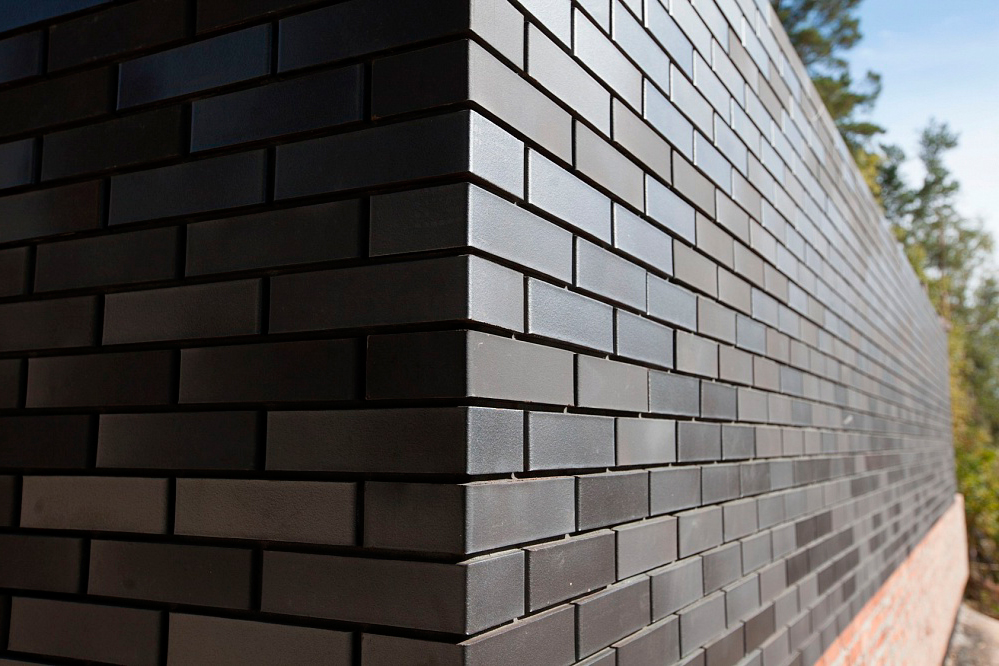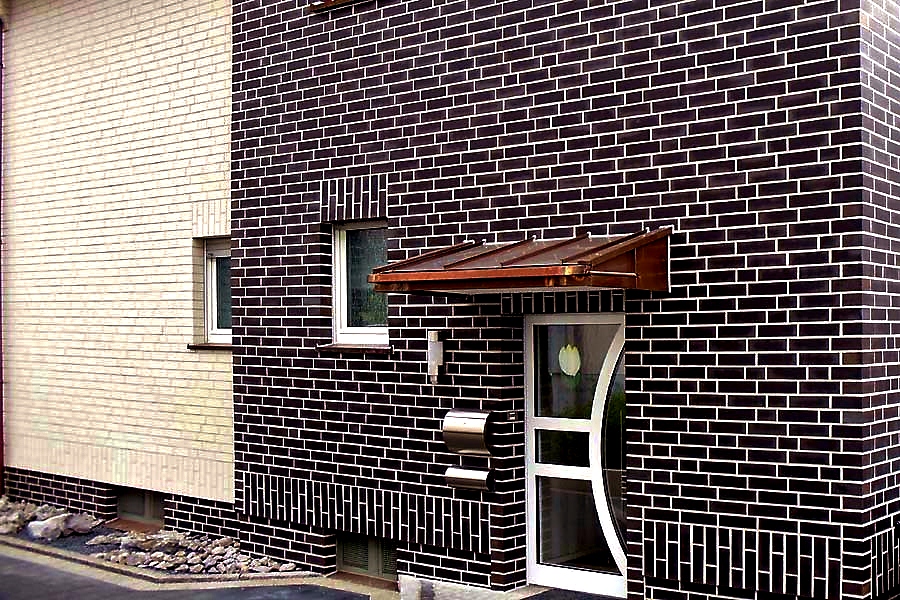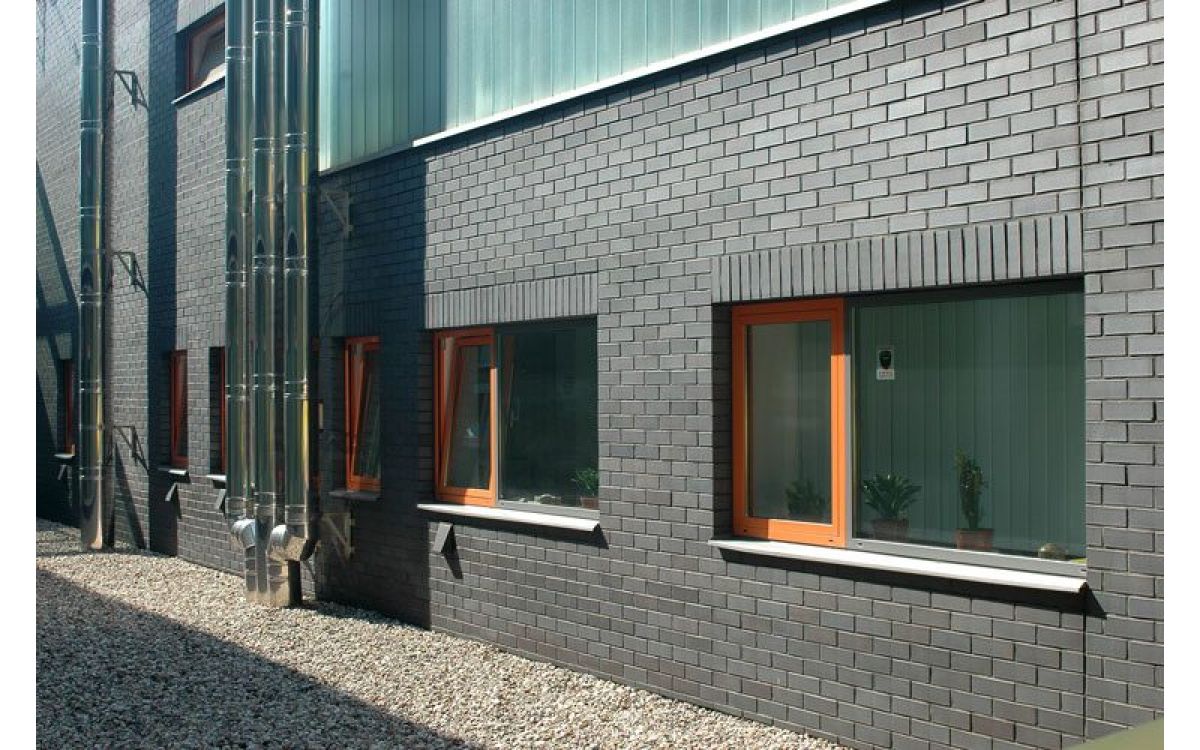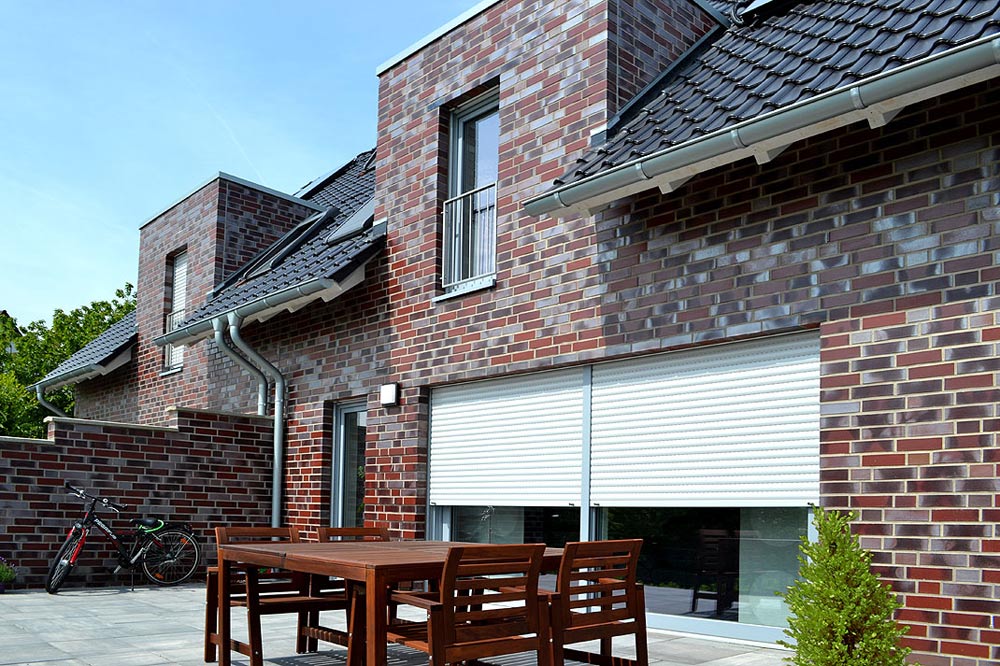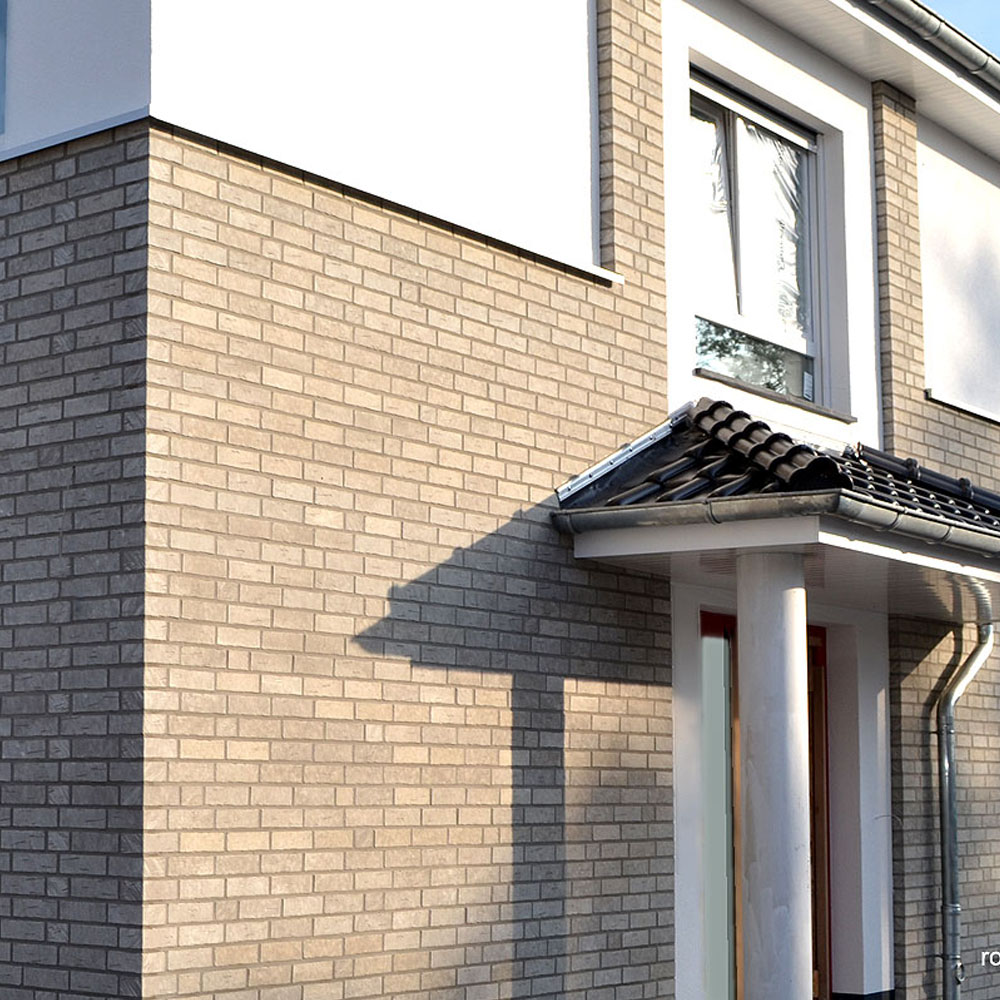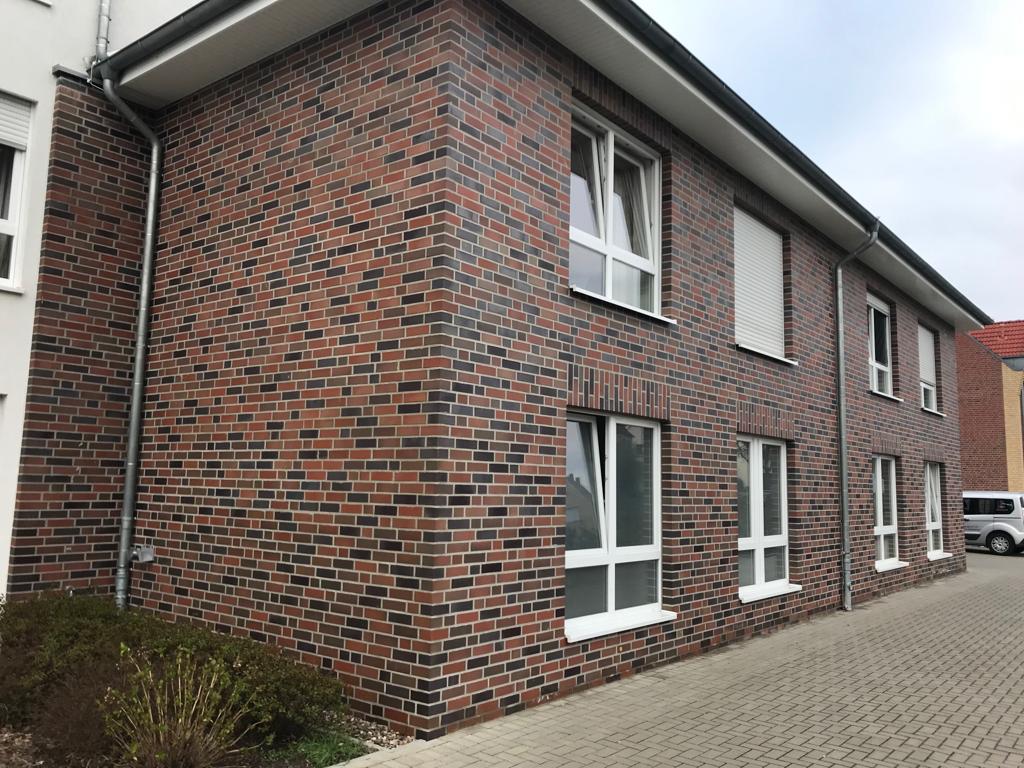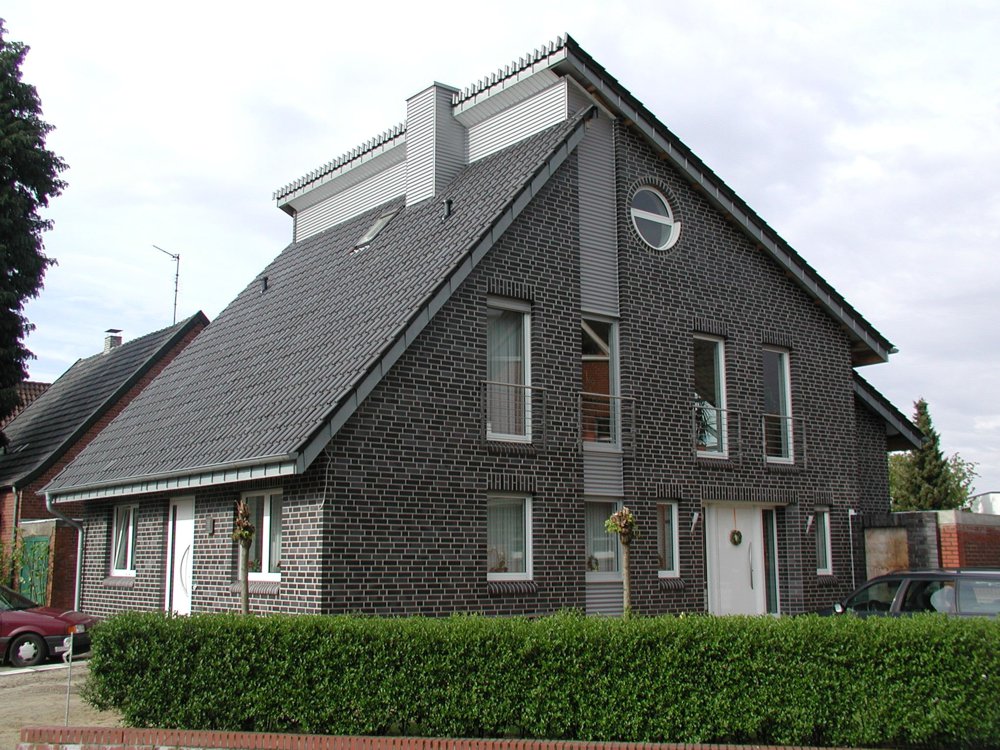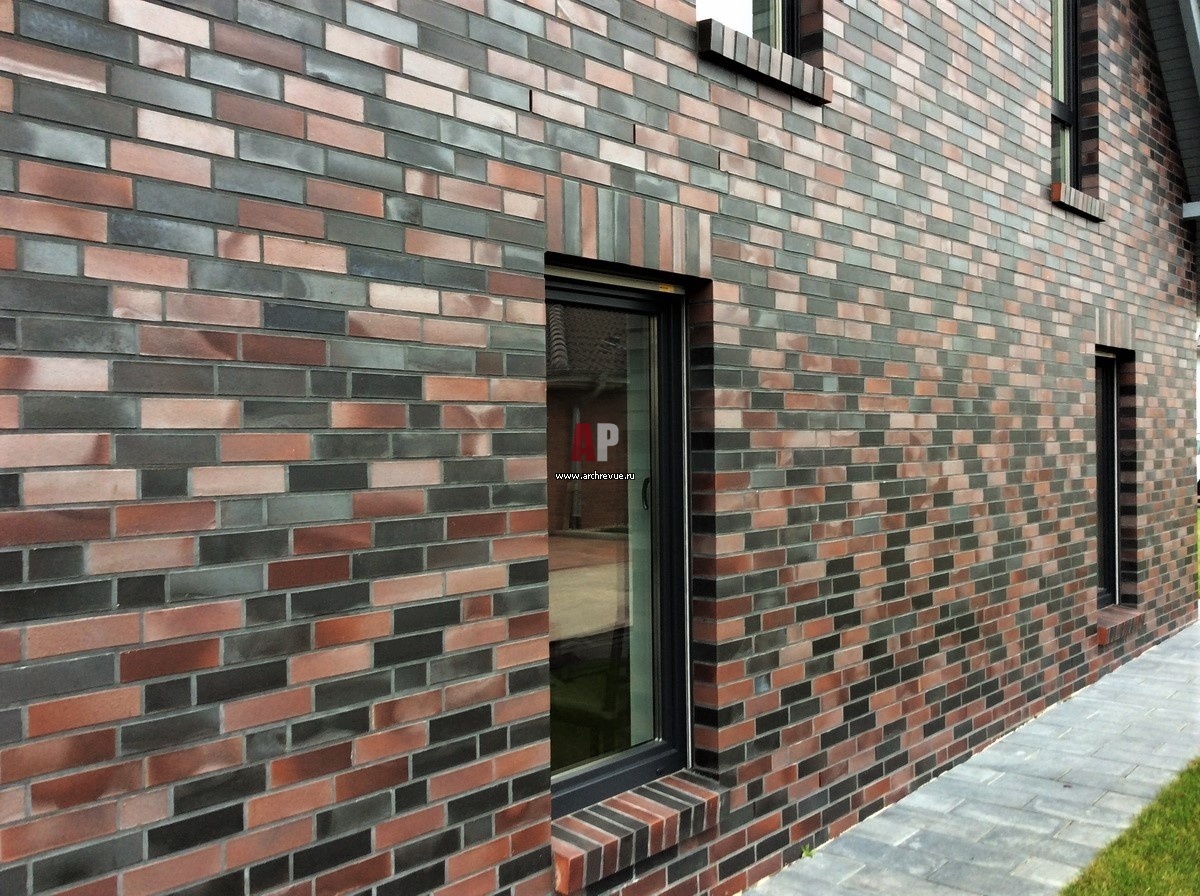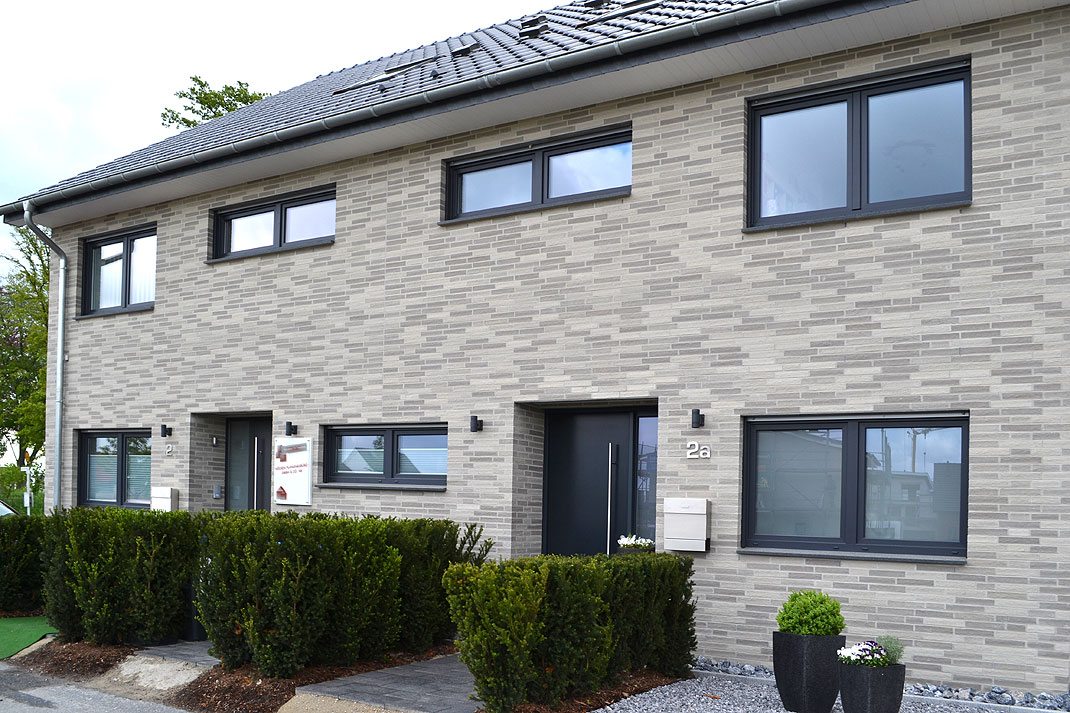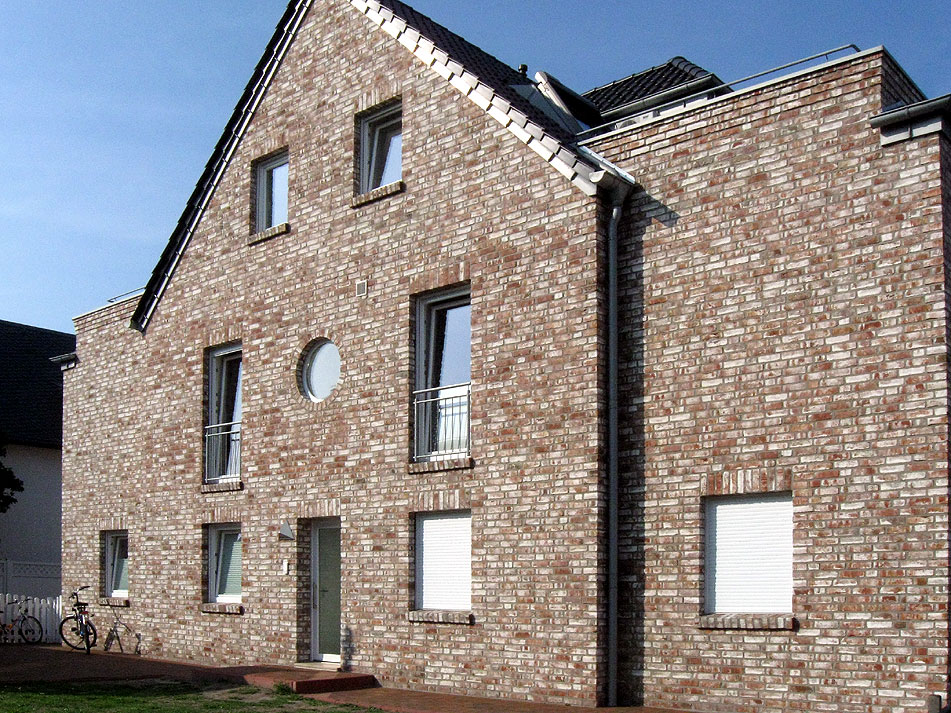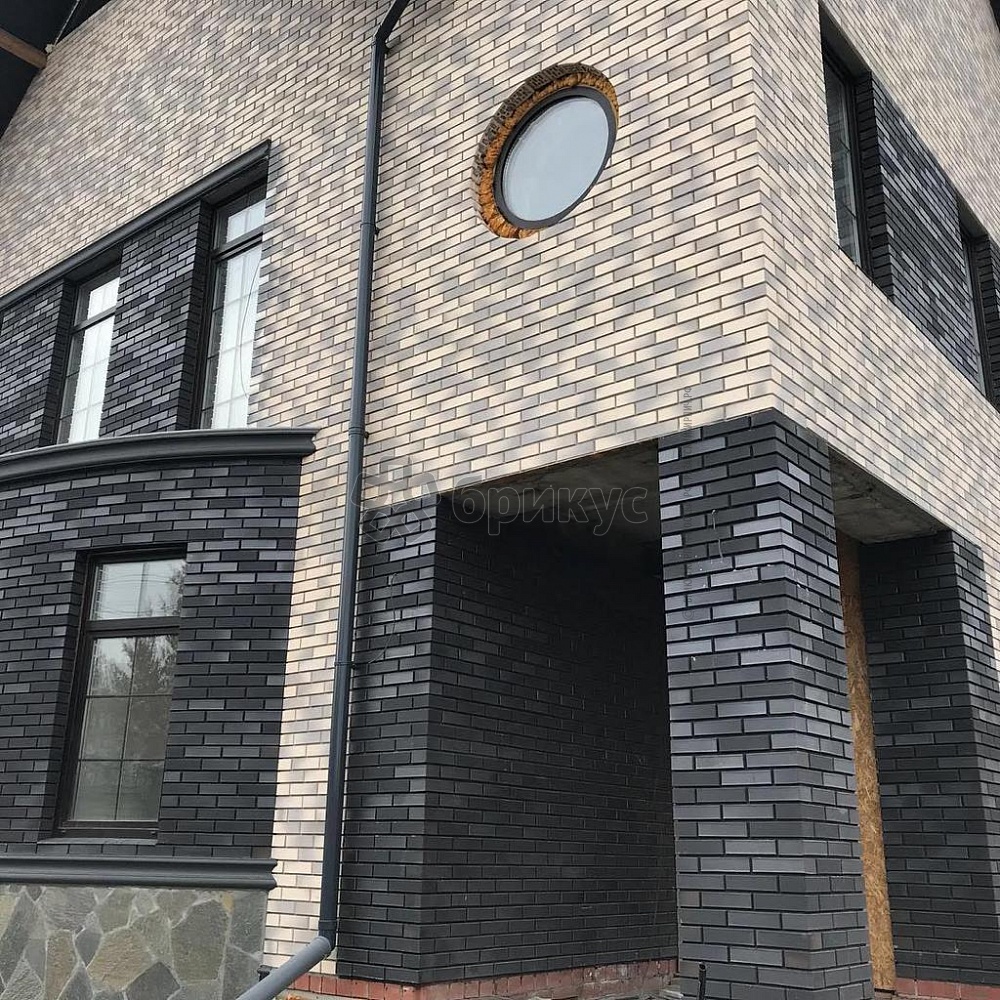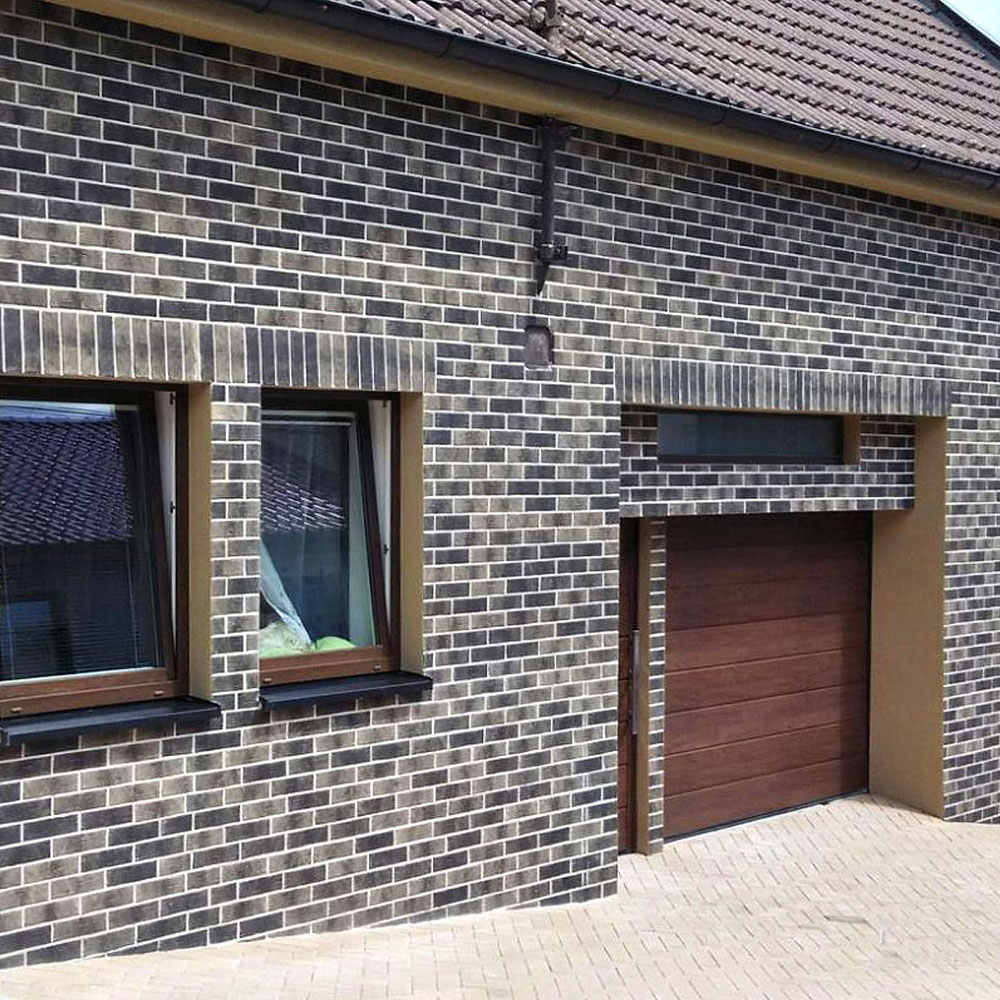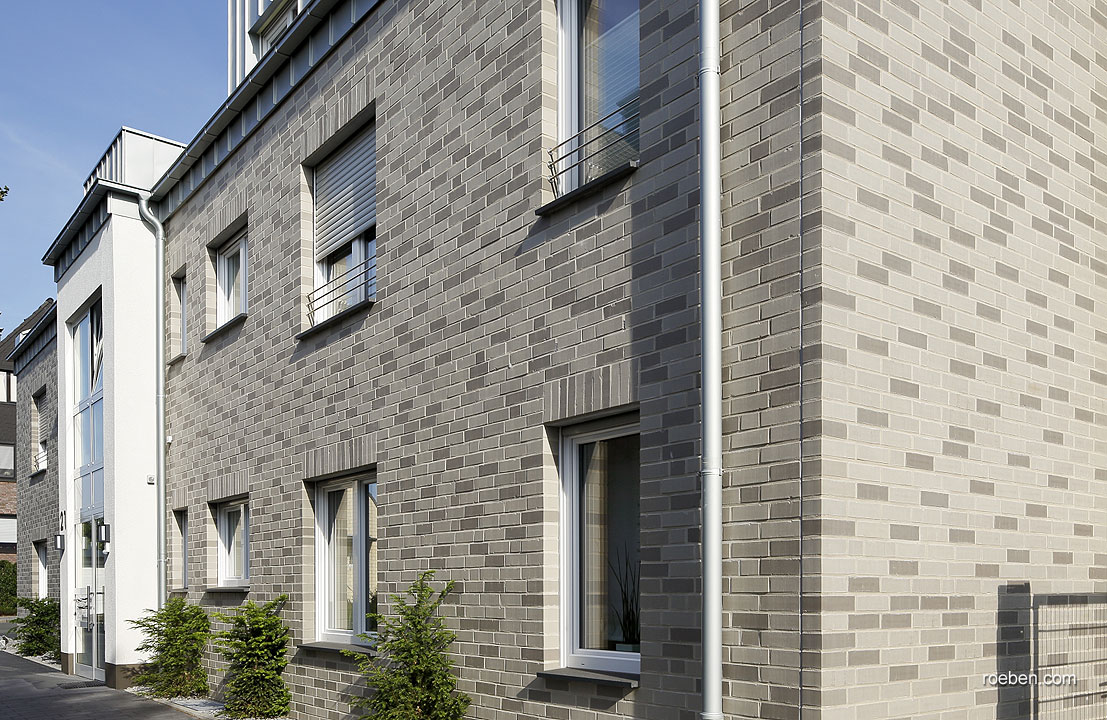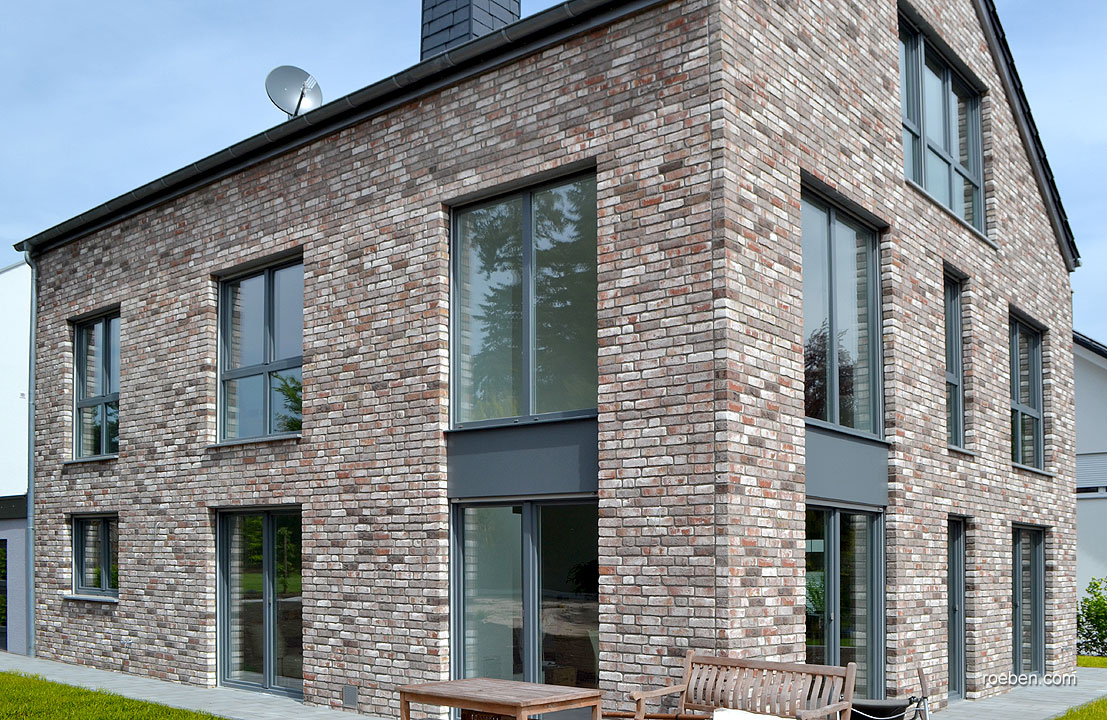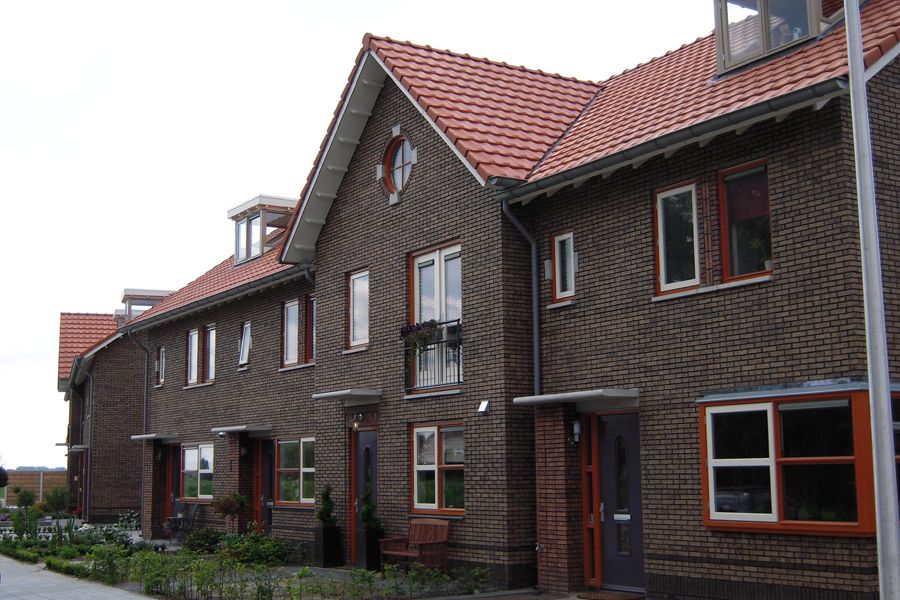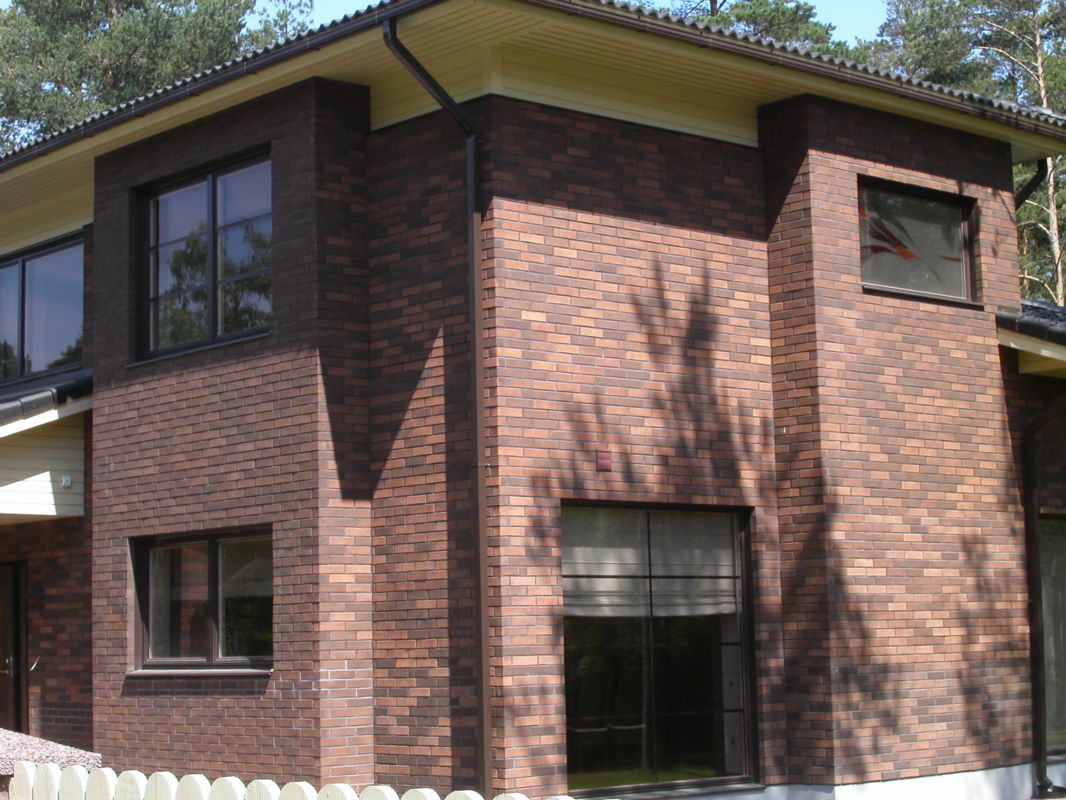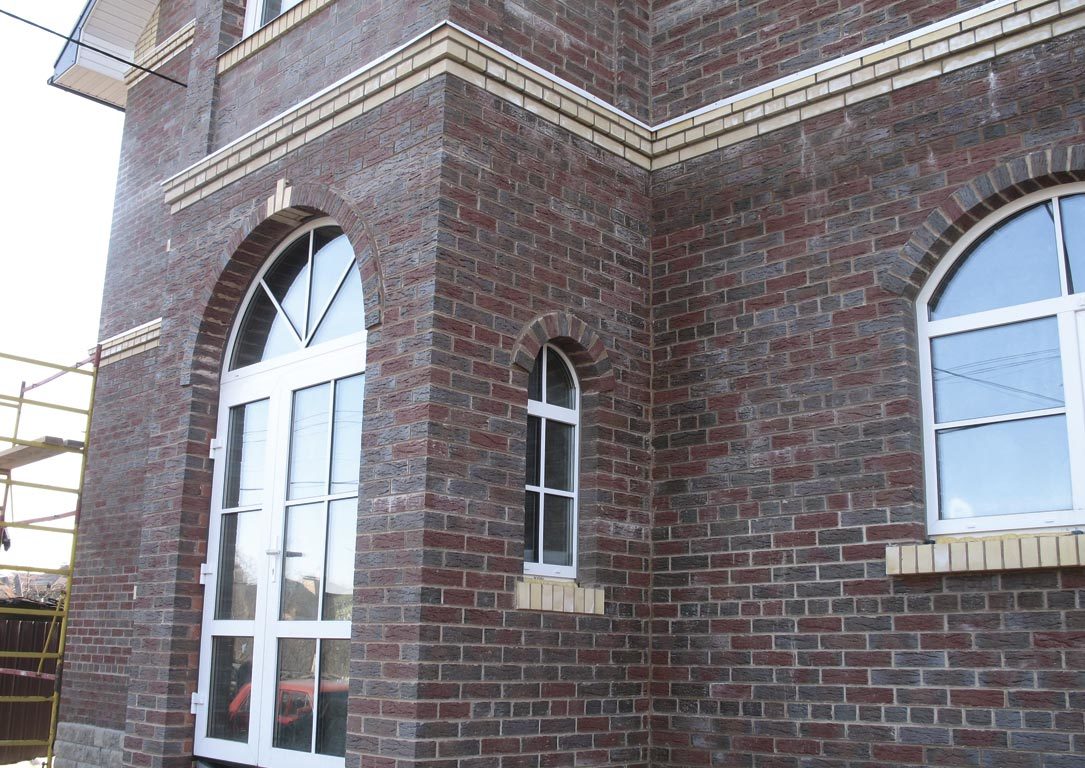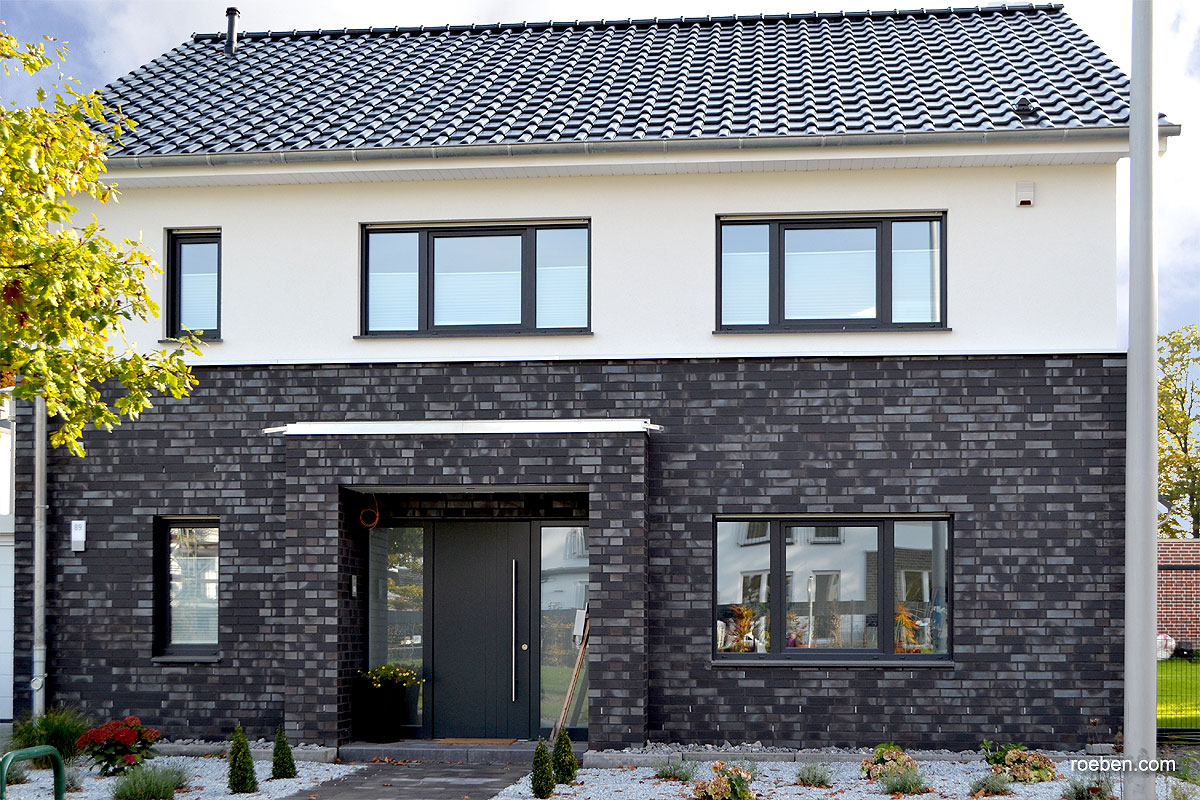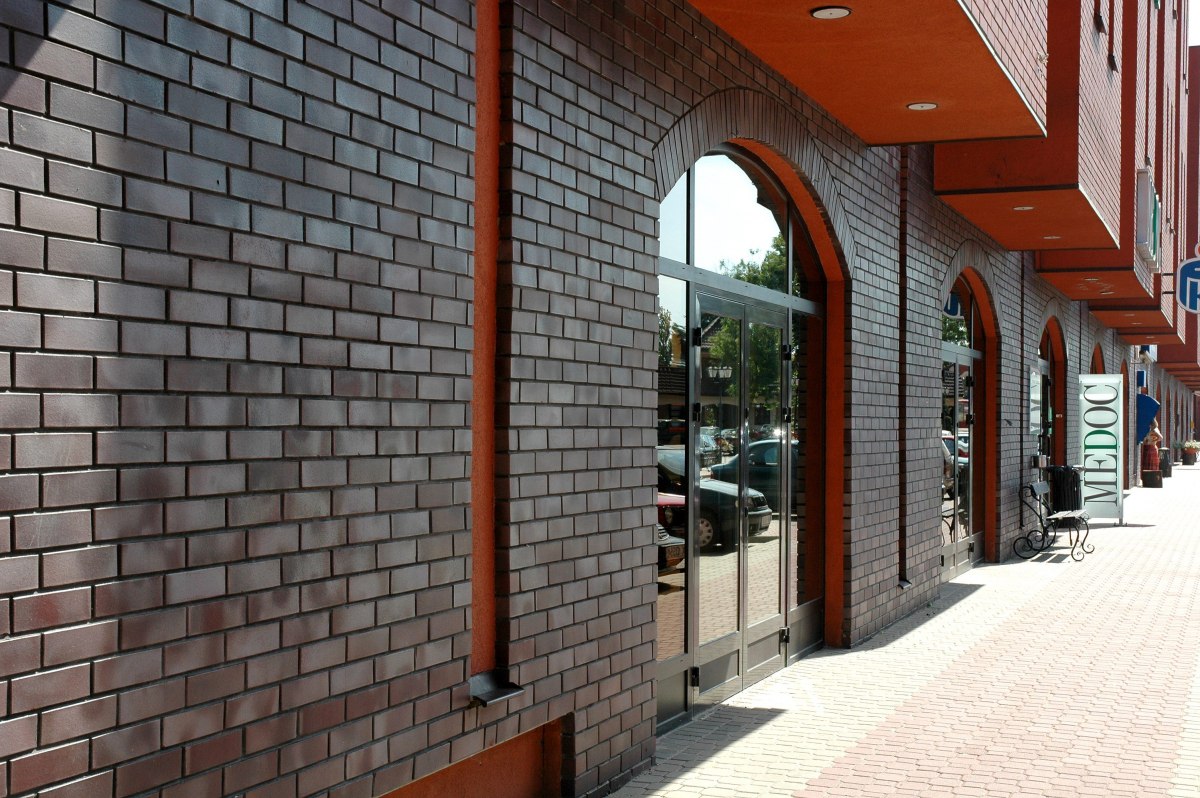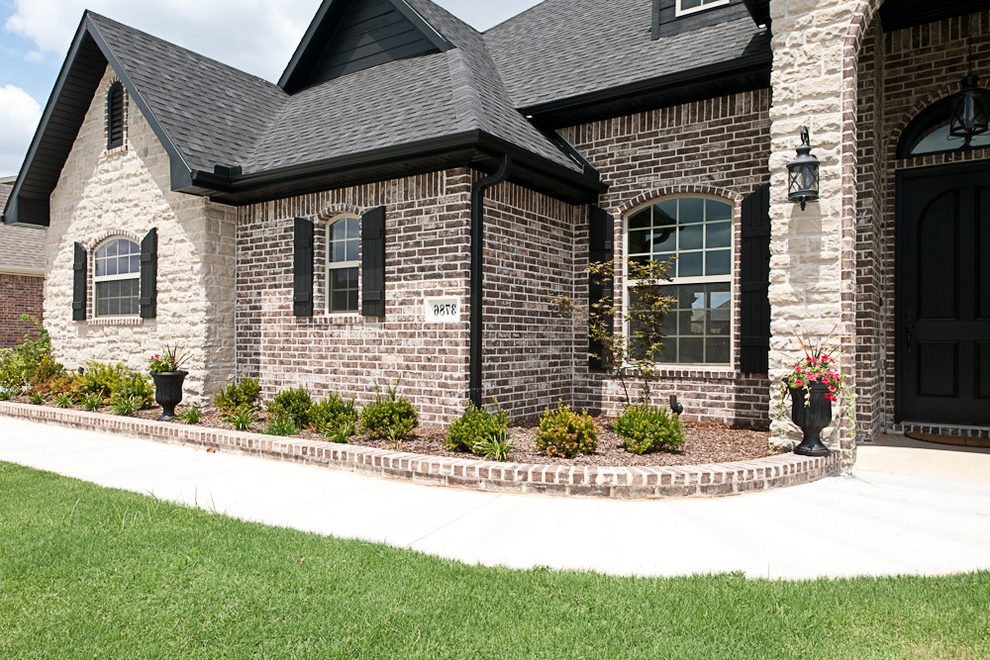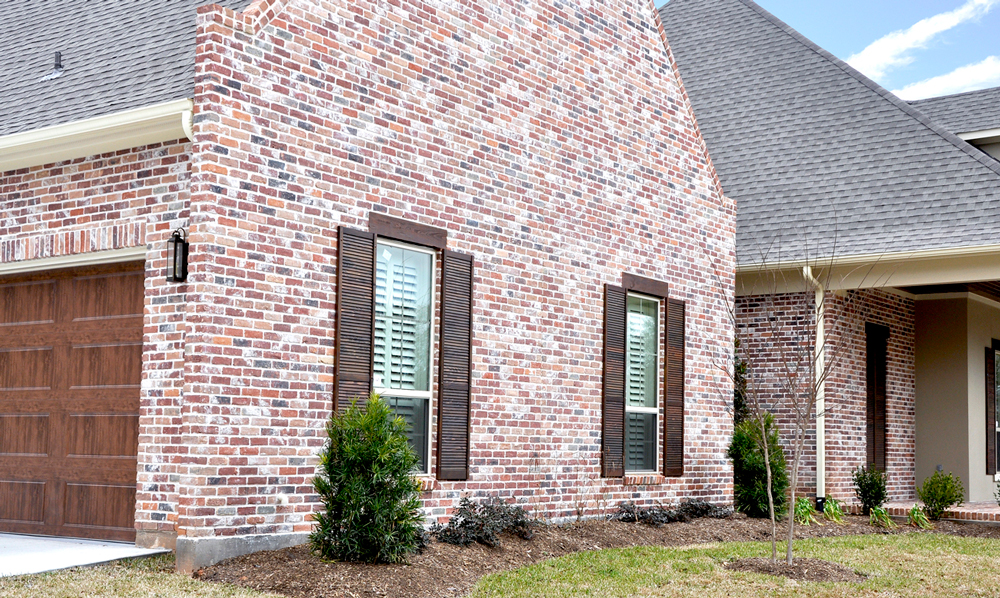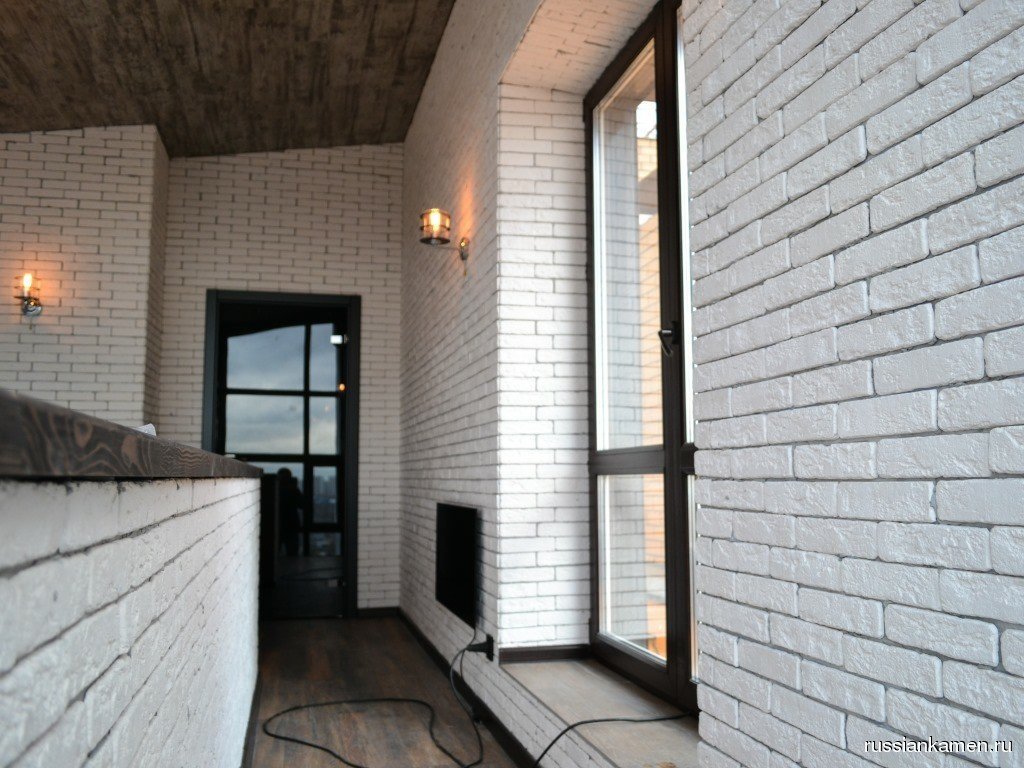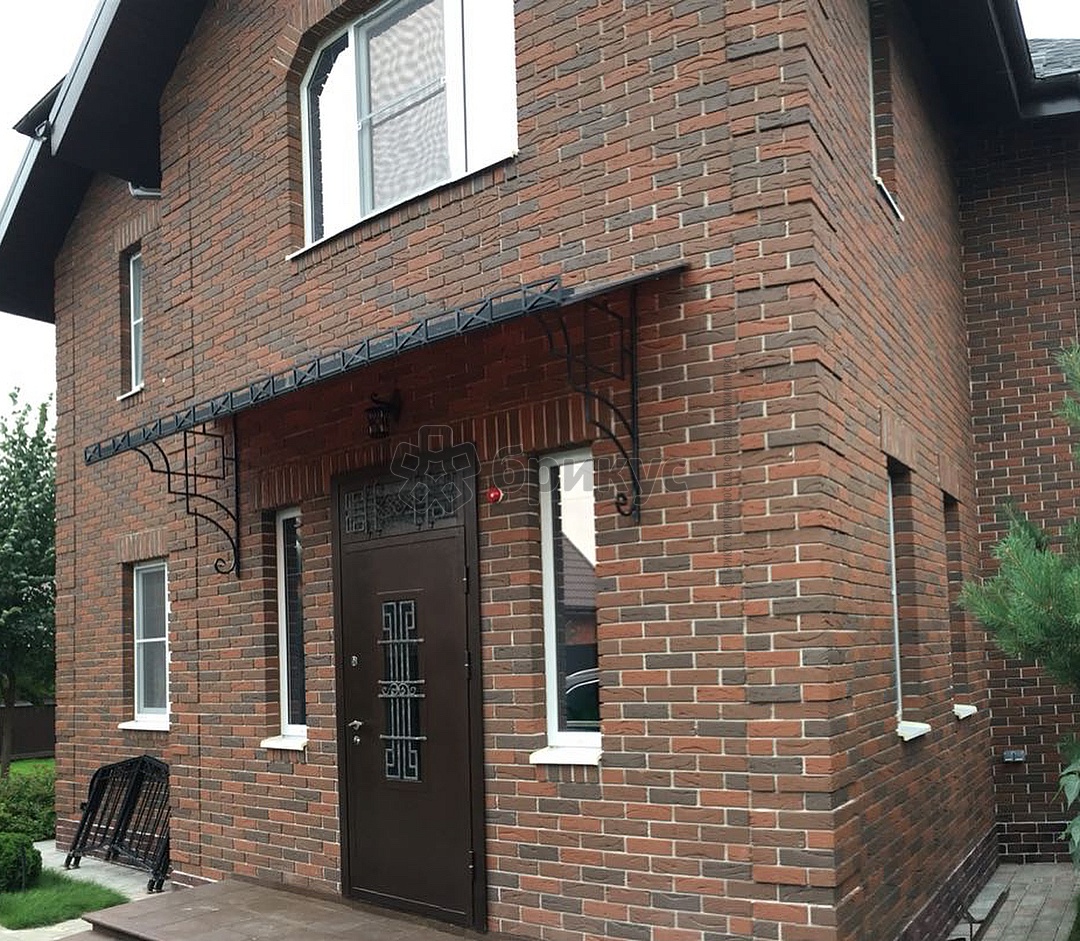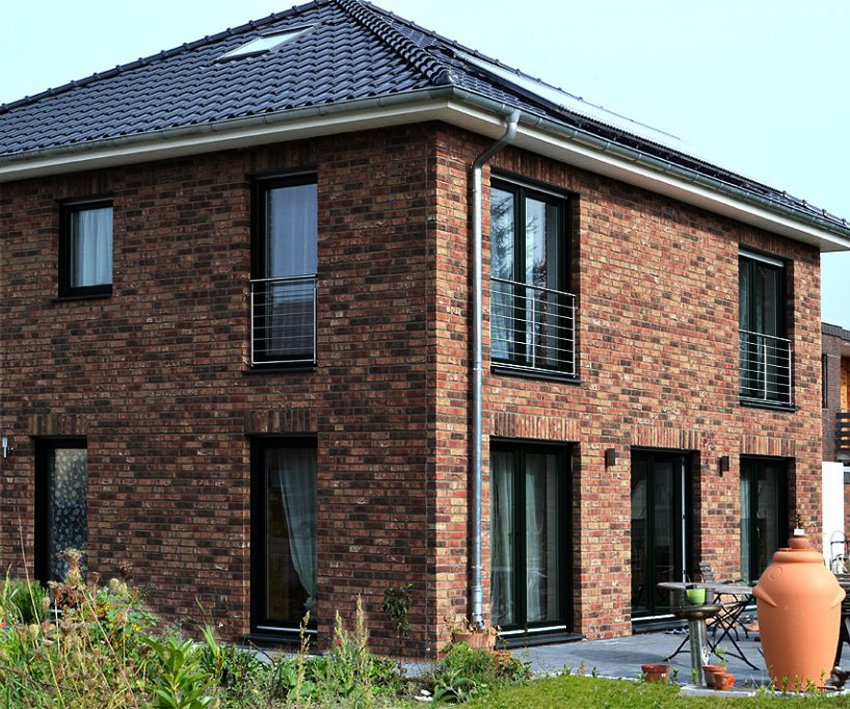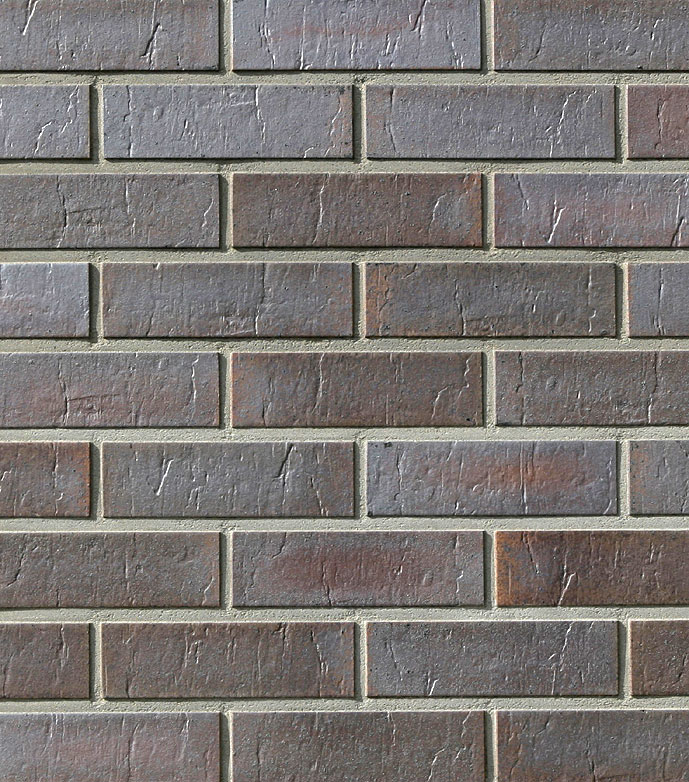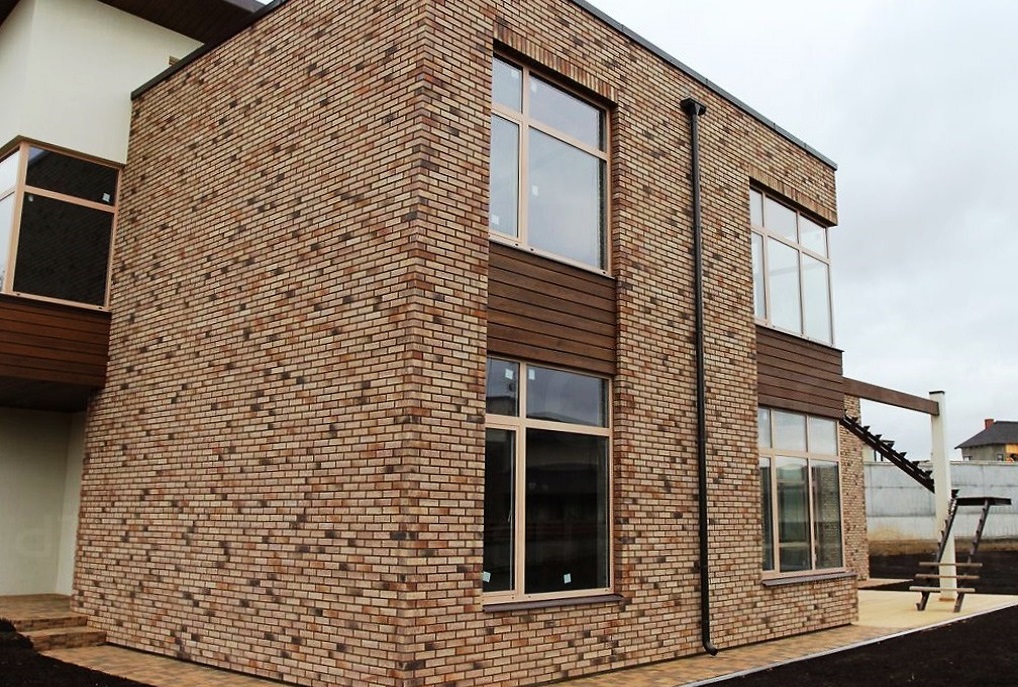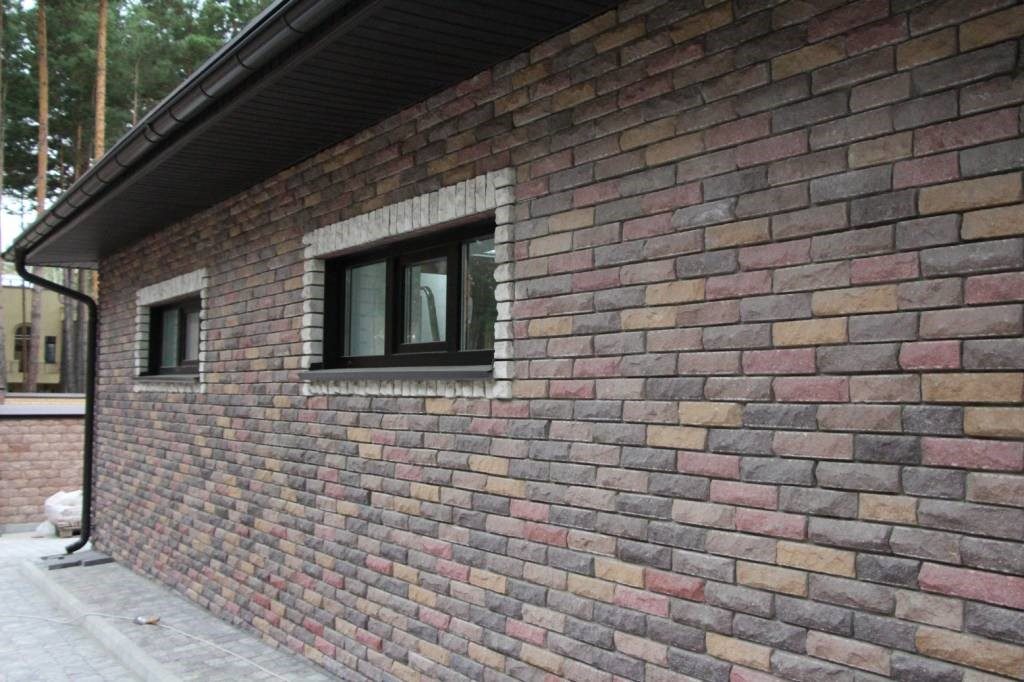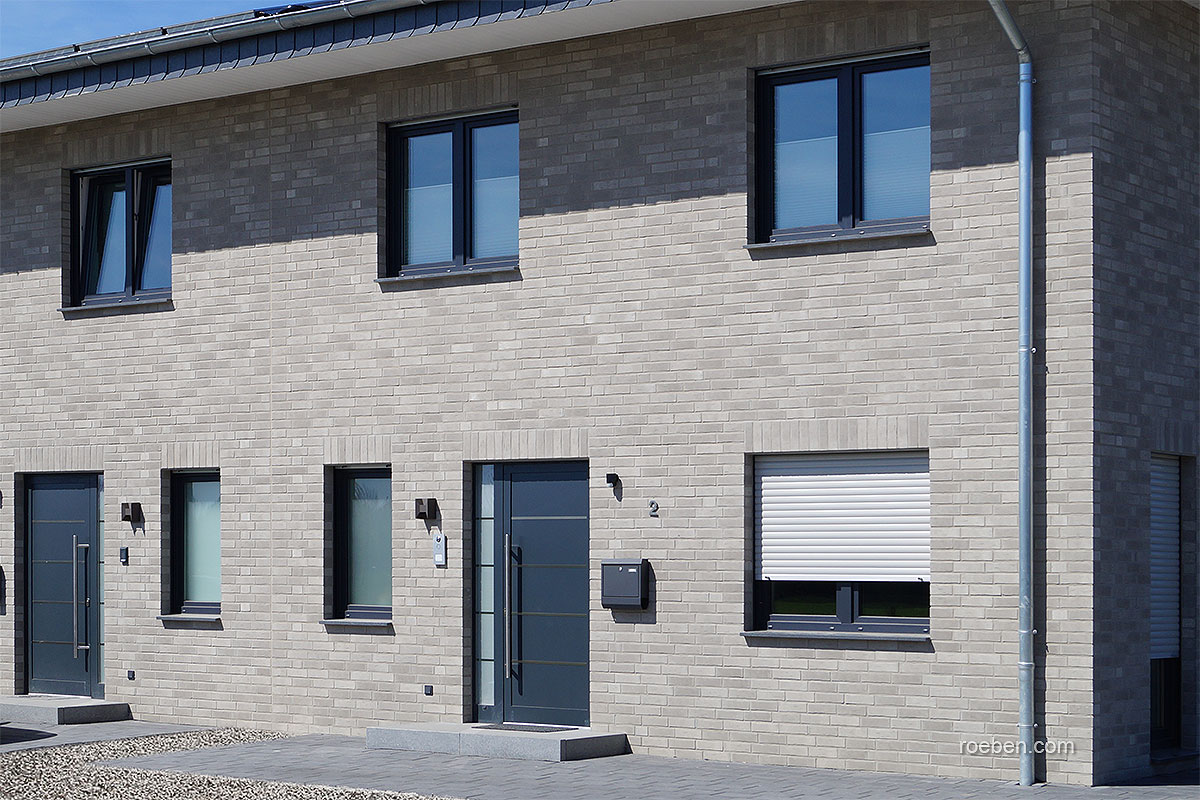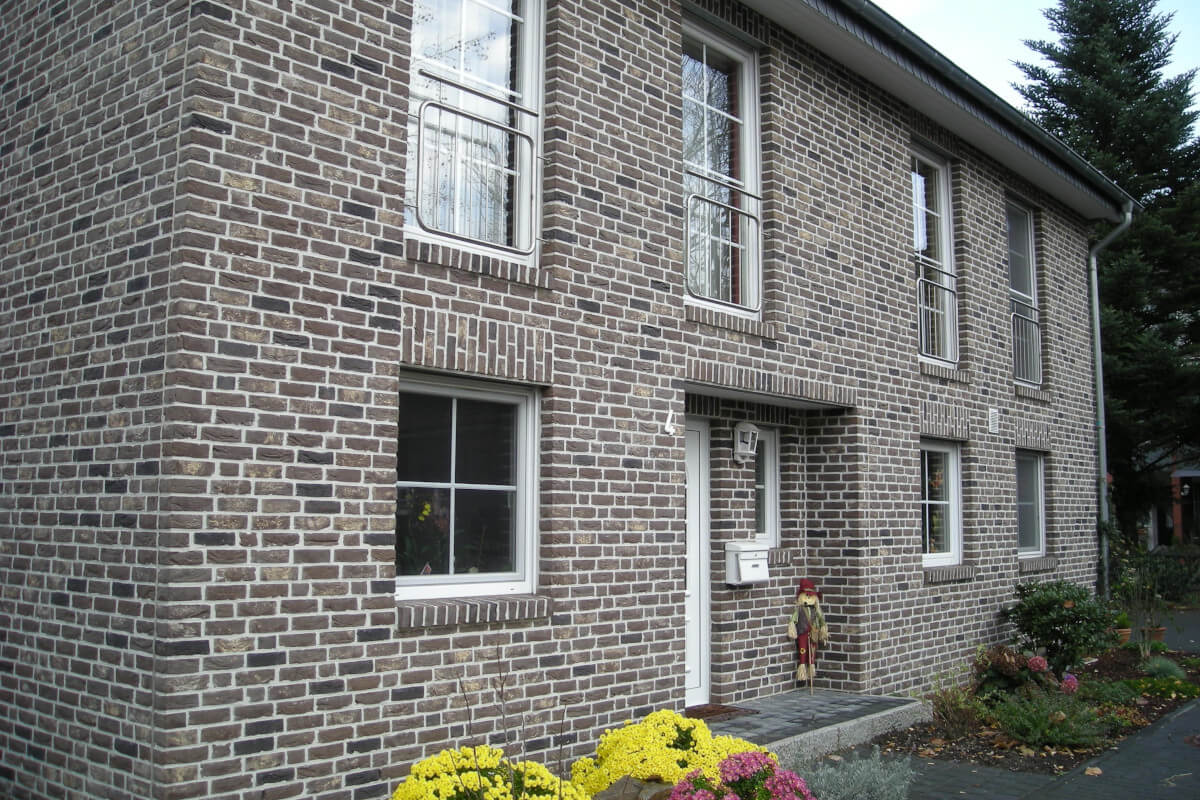Features and Benefits
Facing brick is a type of material intended for facade decoration. In this regard, the brick is also called "front" and "front". Like any finishing element, a brick performs 2 main functions - protective and decorative.
The protective function determines the compliance of the material with the following requirements:
- high strength required to withstand mechanical stress, shock and wind load;
- low coefficient of moisture absorption, which means frost resistance, durability of the product, as well as the absence of mold and mildew in the room and on the surface of the facade;
- heat resistance, resistance to low temperatures and sudden thermal changes (a brick must withstand the most dangerous changes - jumps from low to high temperatures).
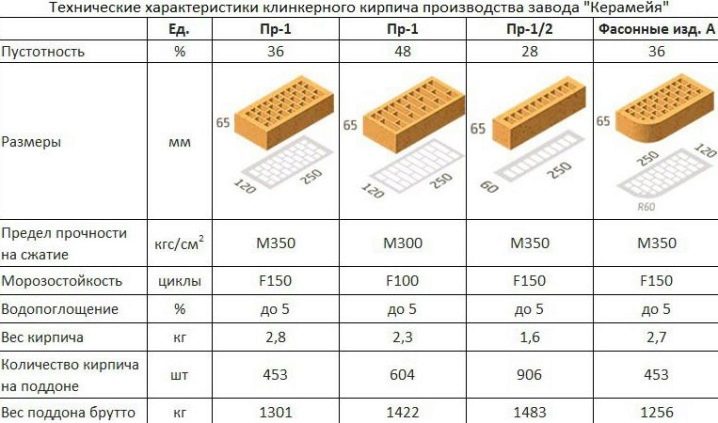
Given the laboriousness and considerable cost of installing a brick facade, a rare owner will agree to a structure's service life of less than two or three decades. However, subject to the masonry technology, such a facade has a 50-year or even more service period.
At the same time, the use of bricks for the facade opens up endless possibilities for its design. Different types of bricks, many options for masonry - all this makes brick cladding a real work of art.
In some cases, the use of this material as a finishing material is unacceptable. Let's dwell on this in more detail.
Brick, depending on the type, weighs 2.3-4.2 kg, respectively, brickwork with an area of 1 m2 made of material with dimensions of 250 * 65 * 120 mm has a weight of 140-260 kg. It is not difficult to imagine how much weight the facade of even a small house will have.
This necessitates a reliable foundation for the facade. It will be possible to use a brick only if the existing foundation protrudes beyond the walls by at least 12 cm (the width of a standard brick) and has a suitable bearing capacity.
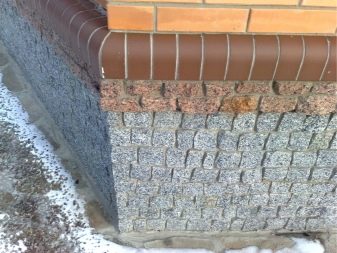
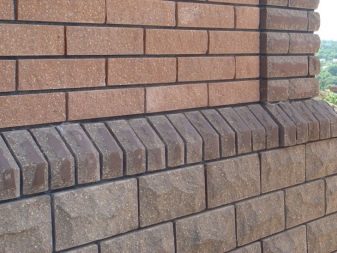
In the absence of such, it is possible to arrange a separate foundation for the facade masonry, connecting it with the main anchors, but this is not always possible from a technical point of view. In addition, the process is quite laborious and costly. Additional costs will also be due to the need to remodel the roofing system and gables, since with the increasing area of the building as a result of finishing, they will not be able to fully protect the building.
When constructing a separate foundation for the façade, it is imperative to connect the load-bearing walls and cladding. As a bonding system, special flexible polymer bonds or stainless steel analogs are used, as well as galvanized steel wire. One end of the wire is mounted to the wall, the other to the facade. This allows you to maintain the location of the facing row, preventing its removal or "run over" to the supporting structures of the building.
An important requirement is the ability of the walls to "breathe", that is, to let the water vapor accumulating in the room into the atmosphere. Compliance with this requirement is ensured by maintaining a 2-4 cm ventilation gap between the facade and the walls, as well as equipping the first air vents, which are located in the upper and lower parts of the facade.
Airflows are carried out using special elements, or they can represent several unfilled vertical joints between bricks. The purpose of such elements is to ensure air circulation by sucking it in the lower part and outputting it in the upper part of the facade. Fresh air circulating inside the gap, as it were, blows through it, taking with it part of the water vapor.
Failure to comply with this requirement is due to the technical characteristics of the brick cladding (water vapor during freezing will destroy the brick, contributing to the appearance of cracks on it) and insulation (if any in the ventilation space), as well as the fallout of condensation on the surface of the walls and half-shelf inside the building.
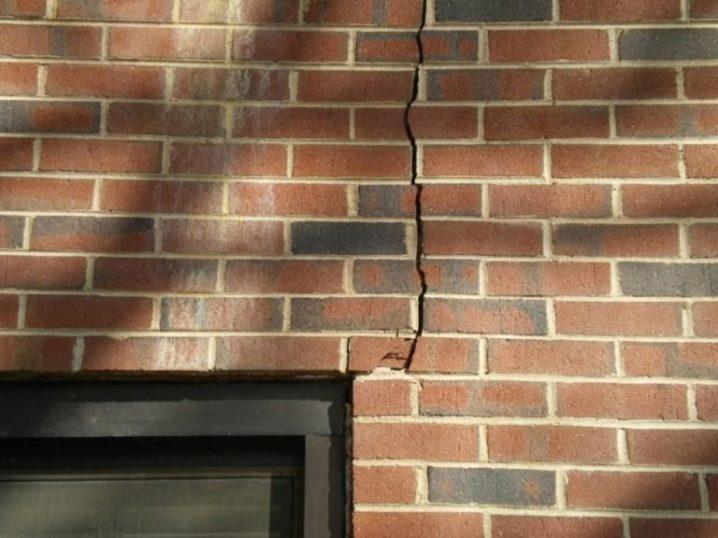
At the same time, in the latter, a layer of heat-insulating material is often laid to increase the thermal efficiency of the building. In this regard, the width of the gap increases by 5 (or 50 mm) more centimeters, which entails an increase in the width of the foundation to 190-210 mm and the need to increase its bearing capacity.
However, today on sale there are narrower versions of the material - their width is 85 mm (eurobricks), and sometimes it can reach only 60 cm.When using such a brick, you can reduce the protruding part to 130-155 mm.
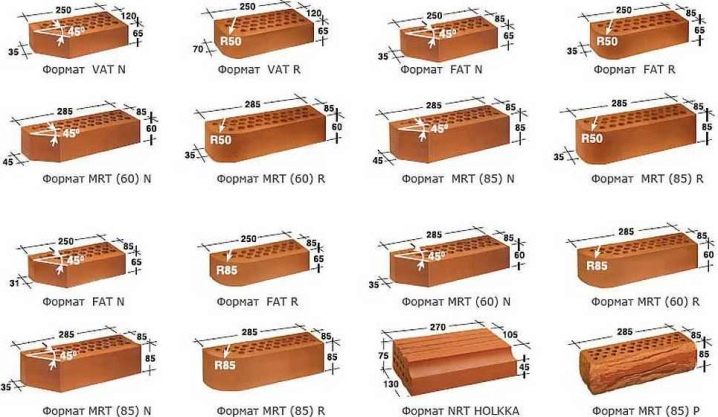
If it is impossible to fulfill the described requirements for the features of the foundation and structure of the building, it is not necessary to abandon the idea of living in a "brick" house. There are worthy analogs of brick finishes - clinker tiles, facade panels that imitate brickwork.
Comparison of all indicators, characteristics of both products and their detailed analysis
Now it's time to take stock. Silicate or ceramic brick, which is better?
Let's use the table. Table 5. The difference between silicate and ceramic bricks.
Name of characteristic indicator Comparison of materialsThermal conductivity
As for this indicator, it is worth noting that when comparing the strength characteristics and the ability to retain heat, both materials are at the proper level.
Also, both are significantly inferior when comparing specifically thermal conductivity with its indicators in cellular concrete and many other wall materials.
More specifically, ceramics will still win, since with aging, the thermal conductivity of silicate products can reach 0.95, while facing ceramics is characterized by a value of 0.35-0.55.
Frost resistance
Both silicate and ceramic bricks can withstand a large number of freeze-thaw cycles. Much depends on the composition of the raw materials of the products, the manufacturer and compliance with the technology during construction.
However, it is still worth highlighting ceramic bricks, especially the clinker version.
GOST also imposes lower requirements for silicate bricks.
Durability If you follow all the instructions of the technical documentation, both materials can last a very long time. But ceramic bricks are still slightly ahead of their competitors.
Both products, due to their strength characteristics, can be used in the construction of buildings on which there is a significant load.
Ceramics, however, should be emphasized again, since especially dense products are used in the construction of the basement, which cannot be said about silicate.
The range of products Again, the palm belongs to ceramic products. Their assortment is richer. Architectural possibilities With the help of ceramic bricks, unique construction objects are created. A photo example is presented below. Ease of laying The process of laying products is extremely similar, so we will not highlight any of the materials.
Both materials are capable of absorbing moisture. They need protection from its effects. Since this characterizes both ceramics and silicate bricks, it would seem that there is no winner. However, the percentage suggests otherwise.
Silicate products absorb up to 16-18% moisture, while ceramic bricks - up to 13%, and clinker products - about 5%.
Therefore, it is worth giving the ceramics their due and highlighting them in this respect.
Environmental friendliness According to the manufacturers, both materials are environmentally friendly. Fire resistance Both silicate brick and ceramic do not burn Scope of application The scope of application is wide in both cases. However, silicate products have some exceptions, which were mentioned above. Accordingly, ceramics are again ahead. The speed of construction is about the same. This is due to both the complexity of the installation and the size of the products.
Both materials require expensive equipment to manufacture. Silicate brick is made exclusively in the factory and is inferior to the ease of release.
Ceramic products can be made on their own, but this requires an investment of time and money, which may not always be justified.
Cost of production Ceramic products are more expensive, and some of their types are significantly higher in price.
Architectural possibilities of ceramic bricks
The video in this article: "Comparison: ceramic and sand-lime brick" contains a comprehensive answer to all questions that may arise in the process of choosing one of these materials.
Views
The basis of any building brick is clay and cement. It is subdivided into single, one and a half with a flat, patterned or double surface. Ease of processing allows you to create a different relief shape. In appearance, gray bricks are divided into the following types:
- with a smooth surface;
- rough, chipped surface giving the effect of pure rock;
- deeply protruding birch bark surface.
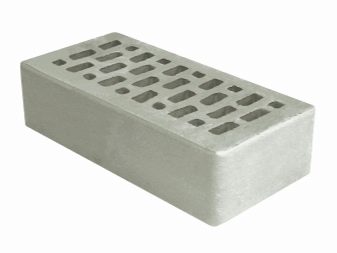
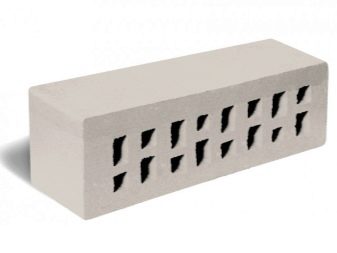
In construction, facing brick differs into categories. Its composition is different.
- Silicate, produced mostly from quartz sand with the addition of lime and ash.
- Pressed, obtained by high pressure from a mixture of cement and small rocks.
- Ceramic, made according to the system of firing special clay and mineral additives.
- Clinker, which has special strength, is made by sintering refractory clay.
To make a gray silicate brick, a special coloring agent is added to its composition, then the whole mass is fired at 200 degrees and high atmospheric pressure. It perfectly isolates sound and reduces heat build-up, but does not tolerate moisture. It is most suitable for interior cladding.
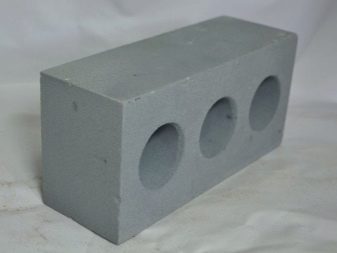
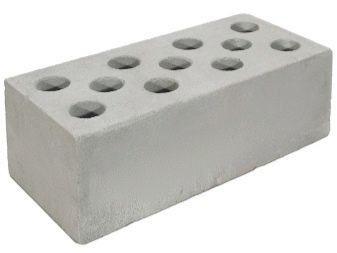
Ceramic gray brick, depending on the components, can be of a different shade. What will be its tone is decided by the original material of the product. It all depends on the type of clay, admixture of salts and oxides. The combination of these components gives a solid shape to avoid rapid wear or mechanical damage. Such bars lend themselves to firing at a temperature of over a thousand degrees.
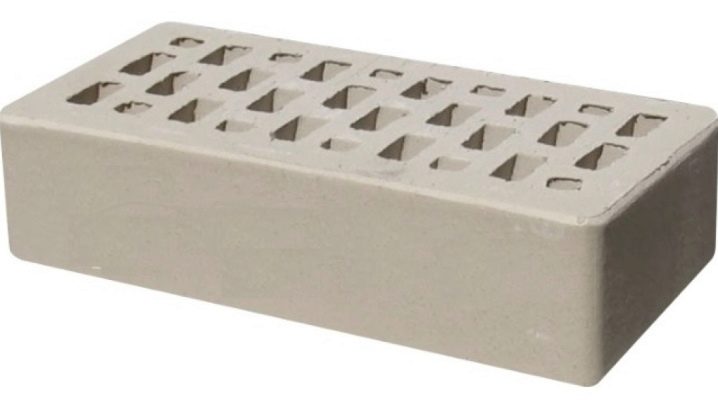
To paint facing ceramic bricks, two technologies are used. The first technology uses white burning or red clay. The latter will give the brick a darker color, and white clay will saturate the material with white, peach and yellow colors. To obtain a different shade, special coloring pigments are added when mixing the cement.
The method of making hyper-pressed bricks is simple. To produce such a gray brick, the crushed limestone is compressed with a hydraulic press to such an extent that the particles of the material become one whole. The crushed material is then bound with a solution of cement and water. All this is additionally painted with the help of coloring compositions. Then the already formed bars are dried in a special chamber for up to 20 hours.
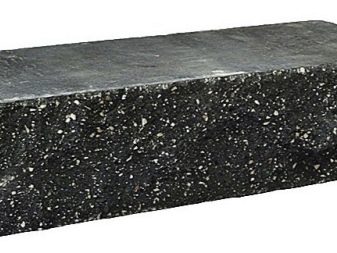
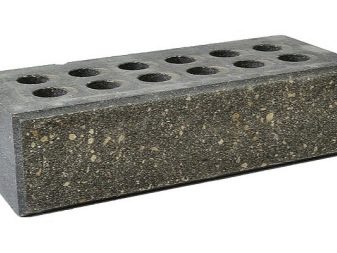
Gray clinker brick absorbs moisture very little and can confidently endure any weather conditions. It can be used for a very long time, maintaining its integrity. A special type of clay is sintered at a high temperature, therefore a dark color for clinker is the norm. Produced mainly in hollow form. Depending on the final firing temperature, its future color is formed.
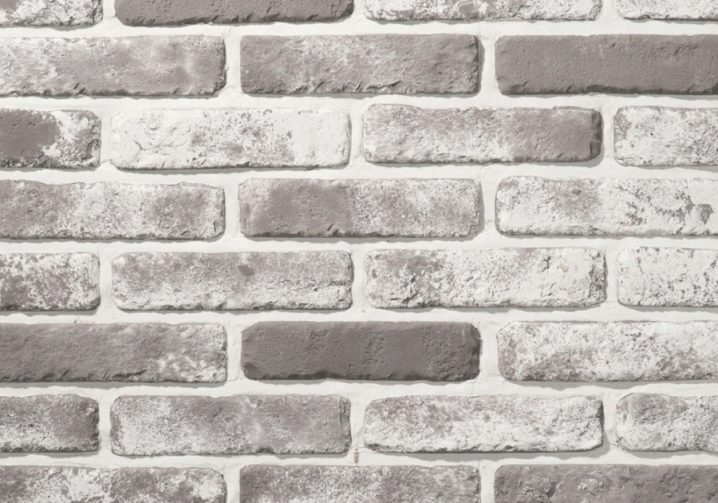
Clinker gray brick is a versatile product. It can be used not only for interior and exterior decoration, but also for the creation of sidewalks, paths for vehicles, platforms.
The choice of bricks for cladding
There are special types of bricks that are designed specifically for facing buildings. These include:
- clinker;
- ceramic;
- hyper-pressed.
 There are some features of the technical / quality characteristics of the types of bricks listed above. For example, choosing hyper-pressed bricks will give you a neat, tidy exterior. But it should be borne in mind that the structure of this type of facing brick is very dense, therefore there will be no air gap between the facing material and the wall of the house - laying of the heat-insulating material will not be needed.
There are some features of the technical / quality characteristics of the types of bricks listed above. For example, choosing hyper-pressed bricks will give you a neat, tidy exterior. But it should be borne in mind that the structure of this type of facing brick is very dense, therefore there will be no air gap between the facing material and the wall of the house - laying of the heat-insulating material will not be needed.
 Ceramic bricks are also available in a hollow version - this is what you need to choose when buying. It makes ceramic bricks lightweight, which automatically reduces the load on the building foundation. True, there is also a minus when using ceramic bricks - a lot of cement mortar will be needed to lay it precisely because of the porosity of the structure of the facing material.
Ceramic bricks are also available in a hollow version - this is what you need to choose when buying. It makes ceramic bricks lightweight, which automatically reduces the load on the building foundation. True, there is also a minus when using ceramic bricks - a lot of cement mortar will be needed to lay it precisely because of the porosity of the structure of the facing material.
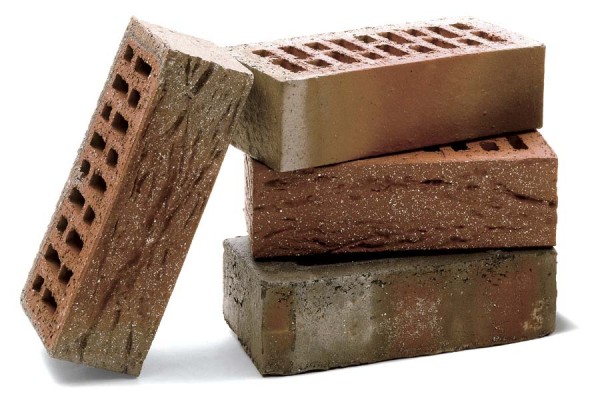 The clinker type of facing brick is distinguished by its high strength, resistance to aggressive weathering, but its cost will also be much higher compared to the other two types of bricks.
The clinker type of facing brick is distinguished by its high strength, resistance to aggressive weathering, but its cost will also be much higher compared to the other two types of bricks.
About the size of facing bricks
The most commonly used bricks are single size. Their long part is 25 cm in size, and the other two sizes are 12 and 6.5 cm. One and a half bricks are thicker - instead of 6.5 centimeters, this parameter is 8.8 cm for them. There are also double products in which the thickness reaches 13.8 cm. These are all domestic measurements.
If we talk about European standards, then they mainly use bricks of slightly different dimensions: 24 cm long, 11.5 cm wide and 7.1 cm thick.
For Americans, too, everything is in its own way: 25 by 6 by 6.5 cm. Or 24 by 6 by 7.1 cm (the latter option refers to clinker, it is often made in Europe using NF - German standards).
Spectacular examples in the exterior
Facing houses with bricks can be performed on the entire surface of the facade or only part of it. Variants of combined facades can be represented by a combination of brick and plaster, wood.
Of course, a combination of noble clinker and wood is a win-win, for example, as in the design of this open veranda.
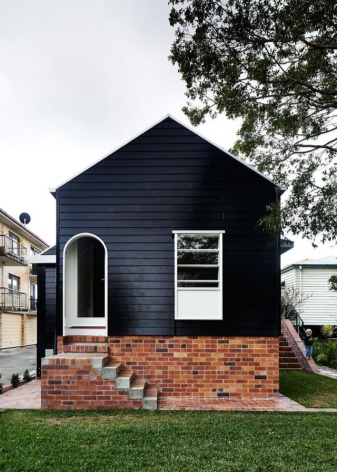
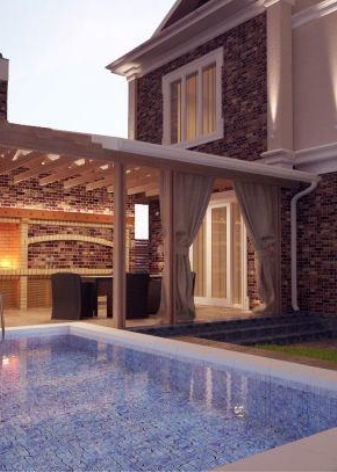
Beautiful facades are obtained when using bricks with a pattern or a combination of monochrome and variegated products (some imported bricks within the same batch have, for example, red and red variegated bricks). As a result, the masonry turns out to be voluminous, a mosaic effect arises.
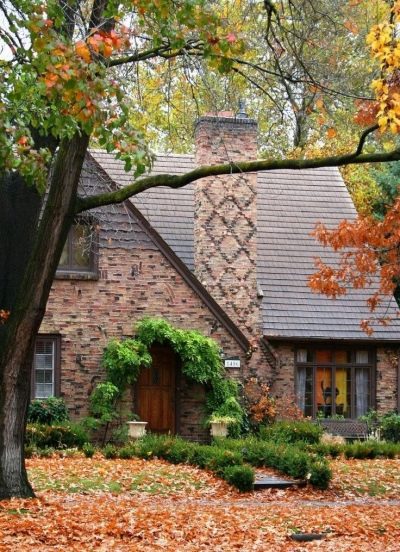
The exteriors of private cottages look refined and stylish, where the elements of the facade are continued when decorating neighboring buildings, garden paths, and entrance groups.
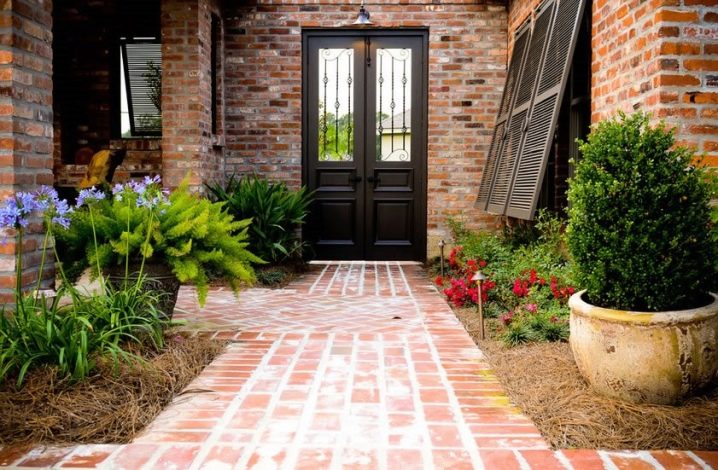
For classic-style houses, the combination of stone and brickwork, as well as the use of antique bricks, is relevant.
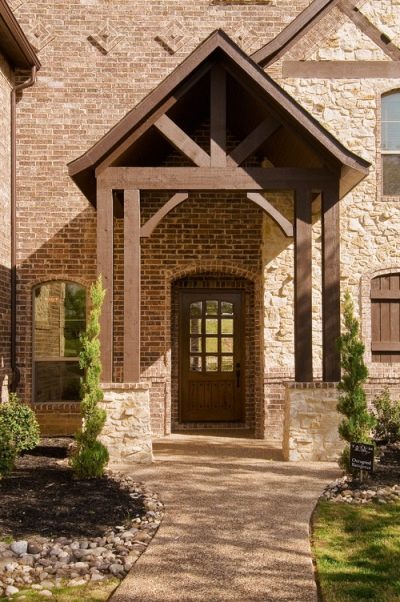
It is also important what the shade of the house will be from the outside. A combination of two or more shades allows avoiding monotony and giving volume to the facade.
A classic technique can be called a technique in which the brickwork is done in beige shades, and the window openings have a darker, contrasting solution.
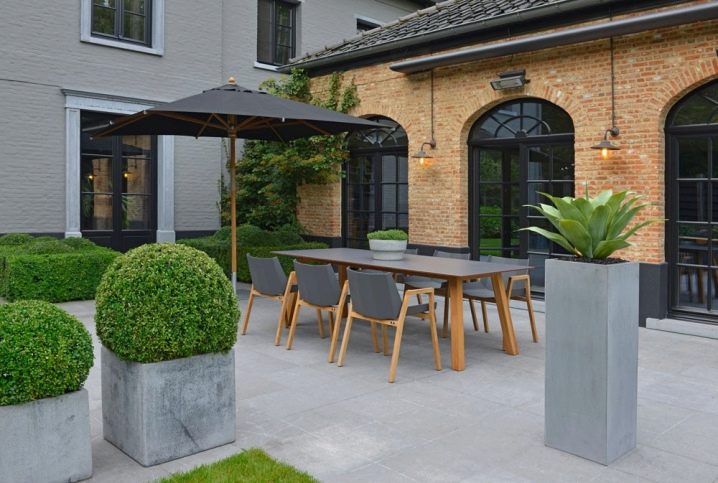
If you wish, you can paint the brick facade, waiting for it to dry completely and treating the surface with a 10% chlorine solution (to remove traces of the solution on the front of the brick). The chosen shade can be any, but the most common is black and white, beige.

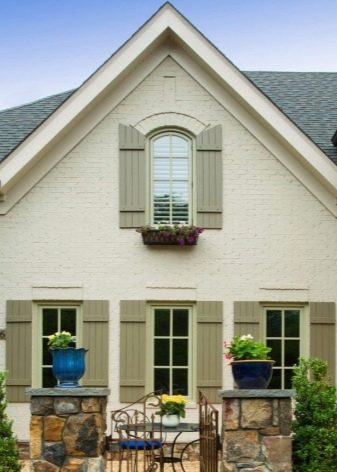
The intricacies of choosing a facing brick are described in detail in the video below.
Advantages and disadvantages of brick cladding
The facing brick for the facade has advantages and disadvantages. Among the positive qualities of a brick facade, it is worth highlighting the following characteristics:
- facing of facing bricks protects buildings from the effects of atmospheric precipitation, in particular, it concerns wooden private houses, cottages and other outbuildings;
- this cladding imparts a rich, monumental appearance. Makes the design richer, more unusual;
- provides additional protection of walls from destruction;
- if insulation is placed in the space between the walls and the brick, then the insulation properties increase many times. The brick retains all the thermal properties inside the building;
- low moisture permeability - there are types on sale designed specifically for facing the facade of houses, the level of moisture permeability of which is only 14%;
- not subject to constant sudden changes in temperature conditions. The material for cladding the outer side of buildings has increased resistance to frost. It can easily withstand more than 50 winters, while not changing the quality of its structure;
- various shapes and a varied color palette. Some bricks can be used for windows, they match the shapes and complement every part of the building. And the colors can be different - white, red, yellow and many others;
- increases the service life of the building many times over.
But, despite the presence of positive qualities, there are also negative properties:
- when installing bricks on the facade, additional pressure is observed on the foundation of the house, it begins to sag over time;
- if piles are used as the base, then after facing the facade with bricks, these components simply collapse due to the pressure exerted on them;
- the facades of brickwork houses are quite an expensive pleasure that not everyone can afford.
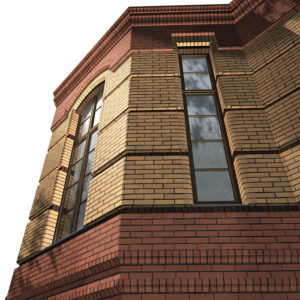
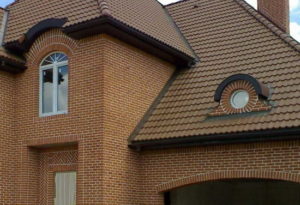
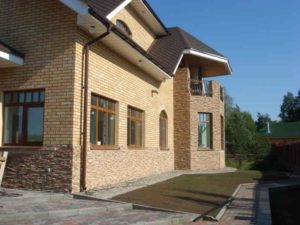
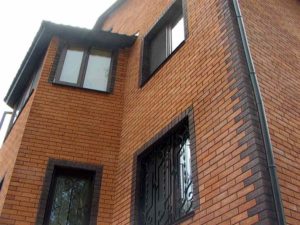
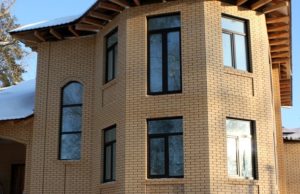
How to choose?
In addition to bricks, consultants usually offer to purchase curly elements for decorating bevels, door and window openings, corners and other architectural elements. Such structures have a curly shape and are much more expensive than bricks for outdoor decoration.
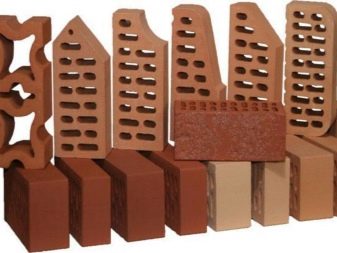
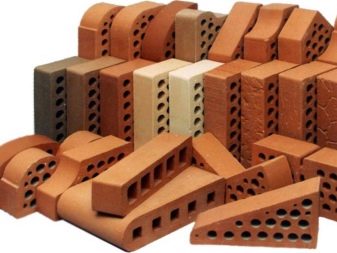
If the cladding is carried out by a professional, then he will be able to attractively arrange the corners and other elements of the facade even without the use of curly structures. This type of work will cost more than a simple brick laying on a flat surface. However, even in this case, the cost of the work of the wizard in the design of complex elements will be lower in comparison with the cost of purchasing curly products.
In addition to bricks, you should take care of buying a mortar. Today, less and less water-based cement-sand mortar is used due to the decrease in water absorption rates of modern bricks.
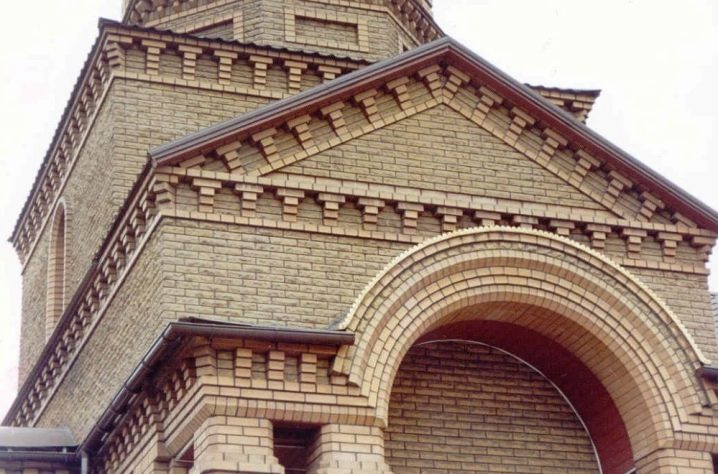
The construction market offers a wide variety of masonry mortars
It is important to select a composition that matches the type of brick used. The fixing mixtures V
O. R. The range includes mortars for clinker and other types of bricks. Conveniently, the same solutions can also be used for external finishing of seams.
Solutions from manufacturers usually have a rich color palette. You can choose the option that is as close as possible in color to the shade of the bricks, or choose a more contrasting combination.
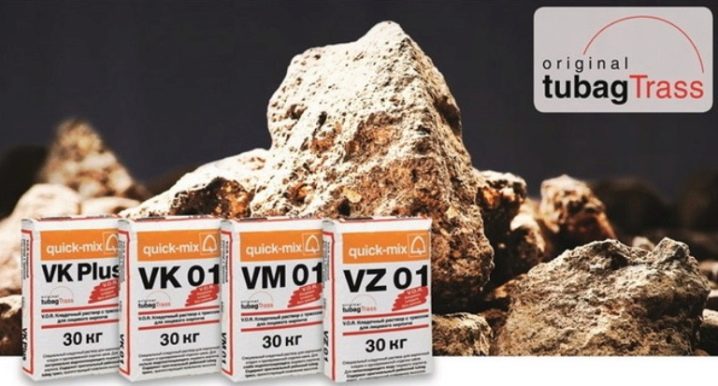
Design
Differences between products can be based not only on the material of manufacture, but also depend on the features of the texture of the brick. Bricks of the following textures are distinguished.
Smooth
The most affordable and easy to manufacture type of brick. It is worth noting the convenience and ease of use - dirt does not accumulate on a smooth surface, ice does not form, a layer of snow does not stick.


Embossed
They have artistic grooves and protrusions that form a decorative pattern. As a rule, they are used for finishing individual elements of the facade - window openings, architectural components. It is irrational to use it on the entire surface of the wall, since the embossed surface retains dust, becomes covered with ice.
In addition, it is useful to know that the relief is invisible from a distance, but it provides an interesting color effect. Refracting against heterogeneous surfaces, the sun's rays illuminate the facade in different ways. As a result, he plays with different colors, shimmers.
Glazed
These bricks come in different colors, sometimes completely incredible. A similar effect is achieved by applying special clay compositions or a layer of colored glass chips to the brick surface. Further, the brick is fired at a temperature of no more than 700 degrees. This causes the top layer to melt and sinter with the main body. When using clay, a painted matte brick is obtained, when a glass layer is applied - an elegant glossy analogue.
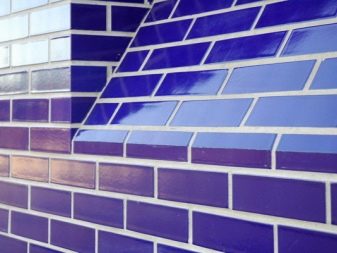
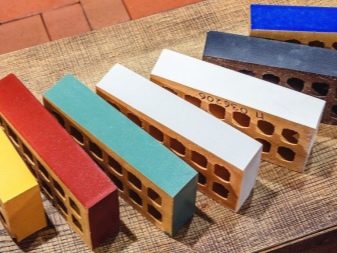
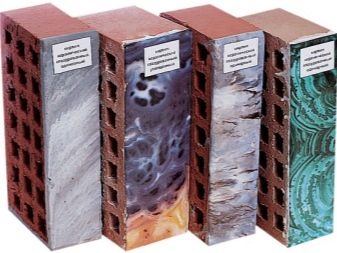
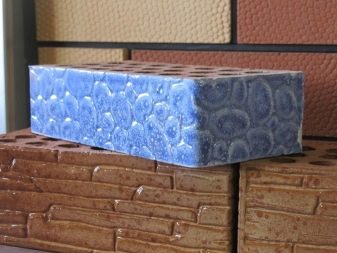
Engobed
Externally, engobed bricks do not differ from glazed ones - they also have different colors, matte or glossy surfaces. However, the weight of the former is less, as is its price. This is due to the fact that the brick is fired not 2 times, but one, which reduces its cost. The dye is applied to the dried product and only after that it is fired.
Types of bricks for facade cladding
Facades of brick houses can be made of different materials. The best is brick. It can be of different types, colors. In addition, on sale you can find original substitutes for this material, for example, facades made of artificial stone look beautiful. So, which material to choose for cladding the facade of the house? Let's take a look at the popular types.
Classical
This material is also called silicate brick. It is often used in construction for the construction of various structures. In addition, it is often used for cladding the outside of many private houses, windows.
The advantages of this material:
- performs excellent protection of the facade from negative external influences;
- has a simple masonry - no difficulties arise during its installation;
- different colors - you can often see silicate brick facades that have different colors - light, white brick, red brick, and so on;
- low cost - this material has a low cost, so it is in high demand.
Hyperpressed
The hyper-pressed look is made from a moistened mixture of crushed stone, limestone and cement. Pigments for color are also added to this mixture, this process is carried out under increased pressure. During hyper pressing, all elements are soldered at the molecular level, which allows obtaining high strength of the material. The finished material is able to withstand a load level of up to 250 kg per 1 square meter.
Features of this material:
- hyper-pressed porous material is highly resistant to severe frost;
- increased moisture resistance - a brick of this type does not allow liquid to pass into the walls during rain or snow;
- has high strength and durability;
- the cost is not too high, compared to the excellent qualities of the material;
- wide assortment - on sale you can find material that imitates an artificial stone facade.
Modern products of the hyper-pressed type may have unstable colors. The design of buildings from yellow, from red, from brown material looks pretty nice. Also, these products can be used for window cladding.
Ceramic
Ceramic decoration material is considered the most expensive, and it also presents certain difficulties in installation. But despite the fact that it belongs to the decorative varieties of stone, it is able to withstand a load of up to 150-200 kilograms per 1 square meter.
Positive qualities of the material:
- long service life - this material can last more than 20 years;
- has increased resistance to moisture, sunlight, temperature extremes. In addition, it does not collapse, does not fade;
- has a solid structure;
- the design of the appearance of ceramic bricks is attractive, therefore it is often used to decorate the appearance of the house;
- does not require increased maintenance - in order to wash off all the dirt, you just need to rinse everything with water from a hose.
Ceramic-type material is available in various shapes and surfaces - smooth, rough, wavy, even. It can be used for wall cladding made of wood, as well as for decorating windows.
Clinker
Clinker brick for the facade is a type of material for construction and decoration. The durability of clinker finishing has long been proven by many European houses that were built several centuries ago.
It is worth highlighting the main advantages of this material:
- Due to the fact that during the production of this material, traditional firing of clay brick is used, its strength and wear are increased. 1 square meter of this material can withstand a load of almost 400 kg;
- high frost resistance, the material is able to withstand frosts down to - 150 degrees Celsius. For this reason, clinker brick cladding is used in northern regions with a cold climate;
- has a high moisture resistance - wall decoration made of this material is able to withstand the effects of heavy rains, snow and other atmospheric precipitation;
- clinker material has a variety of textures, different colors, which makes it possible to use it for wall cladding with various architectural styles.
However, this imitation brick has a very significant drawback - it is its high cost. Its cost is sometimes almost double that of the ceramic material.

